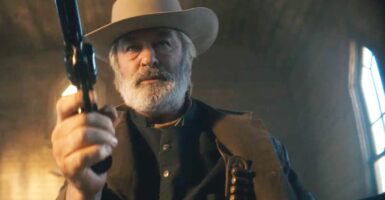Star Trek: Picard Season 1 Explained With Spoilers, Jean-Luc Almost Had A Terrible Intro
What follows is a spoiler-breakdown of everything important that happened in the course of Star Trek: Picard episodes.
This article is more than 2 years old
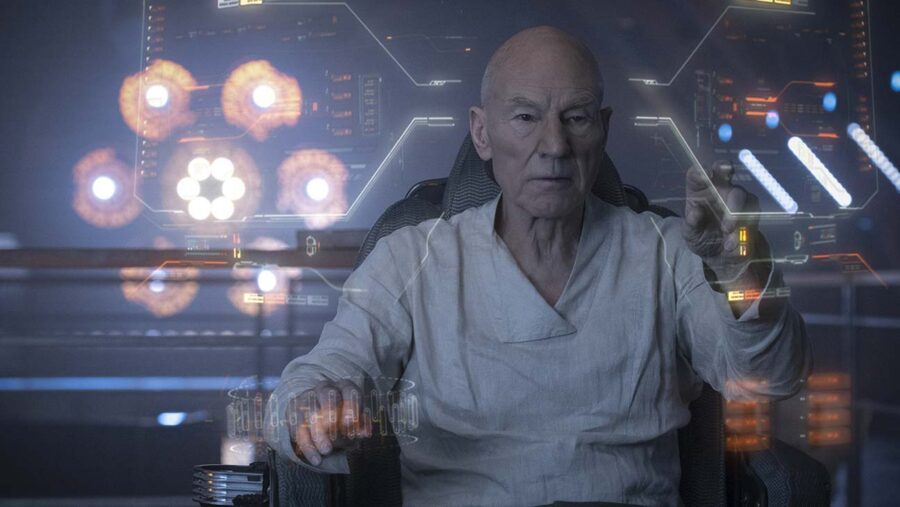
The first episodes of Star Trek: Picard have arrived and there’s a lot to explain. The show is deeply tied into the past of its lead, Admiral Jean-Luc Picard. Unless you’re intimately acquainted with Jean-Luc’s past, and that means seeing every episode of Star Trek: The Next Generation and every Next Gen movie (even the bad ones) you may be a little lost. We’re here to help with Star Trek: Picard Explained.
What follows is a spoiler-breakdown of everything important that happened in the course of Star Trek: Picard episodes. We’ve also filled in the context from the past, that each moment references and how it all ties in to the history of Star Trek and Jean-Luc Picard’s past.
- Not ready for Spoilers? Read our spoiler-free Star Trek: Picard Review.
Picard Was Almost Even Less Picard And More Patrick Stewart
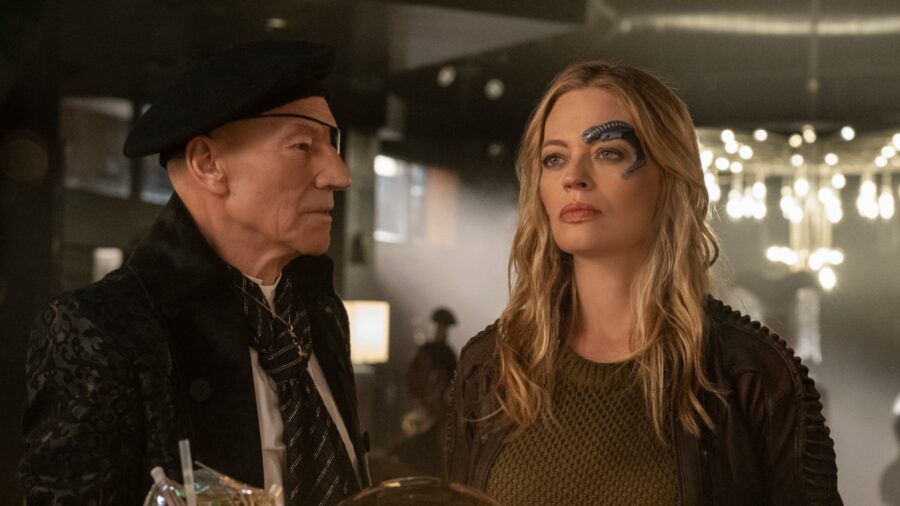
One of the biggest criticisms leveled at Star Trek: Picard season 1 was that Jean-Luc never actually seemed much like Jean-Luc, and actually just seemed like Patrick Stewart. Though Stewart is most associated with that role, the real life Patrick Stewart isn’t actually that much like Jean-Luc, or at least he wasn’t until this new series. But it was almost even worse.
The original plan for Star Trek: Picard season 1 was to have Jean-Luc suddenly be interested in all the things Patrick Stewart is interested in, living out the kind of fantasy life Patrick would love to live.
Talking to the LA Times, showrunner Michael Chabon says this about the early versions of season 1’s script: “The only thing I remember [about those pages] was that it started with Picard having long since retired, and was now a jack of all trades. When the story opened up, he was working as a road manager for a traveling theater company, and we were doing a performance of Samuel Beckett’s Krapp’s Last Tape.“
Captain Jean-Luc Picard was never some kind of theater nerd. The Picard we know had a life-long obsession with archeology and had recently become very interested in playing the flute. He hated performing in front of people and was a very private man who kept to himself, not some adventurer who ran around putting on a show. It’s Patrick Stewart that would love to be running around road managing a traveling theater company.
So how did those wires end up getting crossed? Apparently in order to get Patrick Stewart to agree to do Star Trek: Picard season 1, they had to give him an unprecedented amount of creative control. Stewart has never been anything other than an actor, but on Star Trek: Picard he was allowed to dictate the story and everything about his character. He even made them toss out their original plan and craft a new story the way he wanted.
Under those circumstances it totally makes sense that the show would end up taking the Picard out of Picard and replacing it with everything loved most by Patrick Stewart. And now we know it could have been even worse.
Infamous Reviewer Mr. Plinkett Comes Out Of Retirement To Trash Picard Season 1
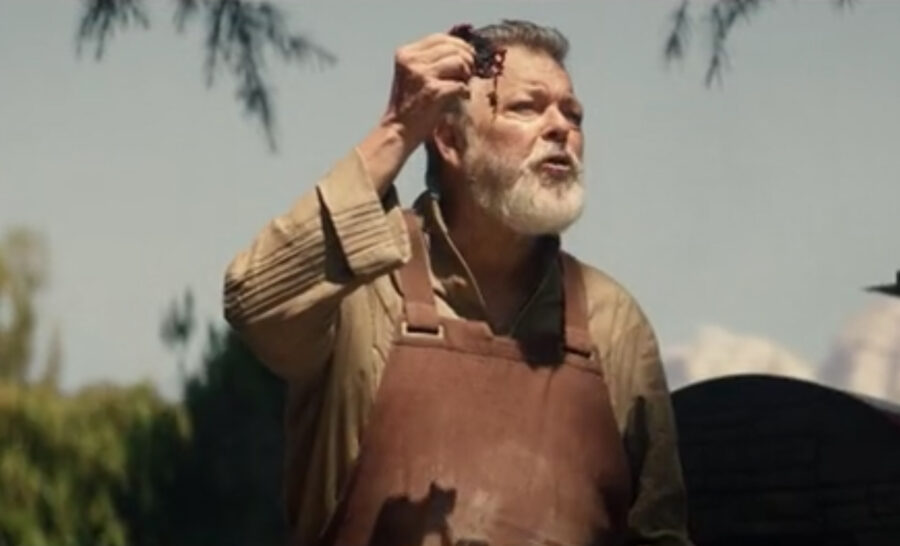
If you’ve been paying attention to movie discussion over the past decade or so at all, then you’ve probably heard of Mr. Plinkett. For those of you who haven’t, here’s an introduction.
Harry S. Plinkett is the alter ego of Mike Stoklasa, who created the character to creepily review movies way back in 2002 by ripping apart Star Trek: Generations. Plinkett went on to become a viral sensation and resulted in the founding of Red Letter Media, one of the most popular movie review channels on YouTube.
Except in 2018 Mr. Plinkett went off into retirement with his review of The Last Jedi titled “The Last Plinkett Review”. He hasn’t been seen reviewing anything on the internet since… but he’s coming out of retirement specifically to rip Star Trek: Picard to shreds.
Here’s Mr. Plinkett’s 90-minute dissection of Star Trek: Picard season 1, with spoilers…
For those of you who agreed with my review of season one, this will probably prove cathartic. For those of you convinced Star Trek: Picard season 1 was good… you probably won’t want to watch it.
What Happened To Narek?
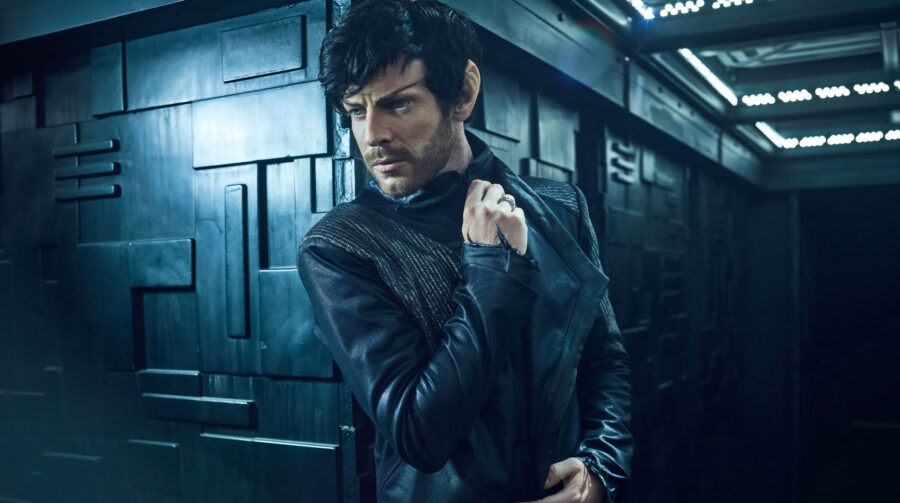
It’s not a surprising spoiler to say Narek (played by Harry Treadway) was one of the main characters of Star Trek: Picard season 1. He appeared in nearly every episode of the show and filled a pivotal role. If you were to rank the most important characters of the season, he’d definitely be in the top five or six well above people like his nefarious sister or Commodore Oh. Heck he was probably more pivotal than even Raffi or Rios.
But we know what happened to Raffi and Rios (of course) and his sister (killed by Seven) and Commodore Oh (ran back to Romulus). We have no idea at all what happened to Narek. The show just seemed to sort of forget he existed, halfway through the finale.
The last time we saw Narek in the Picard finale he was fighting the Synths to try and blow up their beacon. They’d stopped him and pinned him to the ground and we never saw him again.
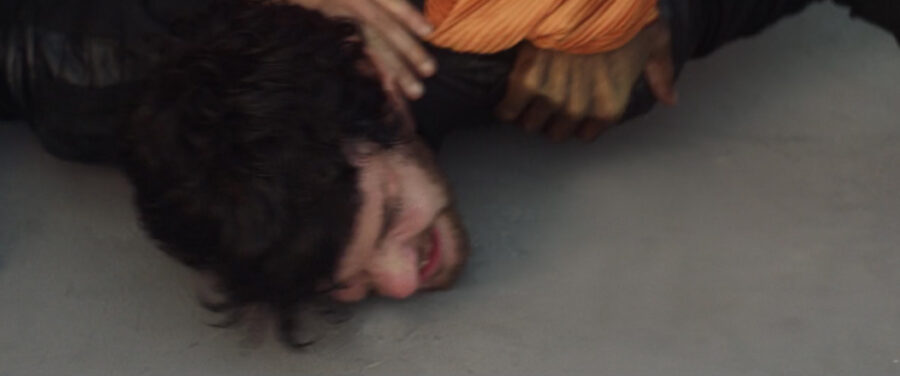
So what the heck happened to him? Star Trek: Picard showrunner Michael Chabon took to Instagram to provide this totally unsatisfying answer: “Yeah. Narek. We know, we know. A casualty of the editorial process, alas. The intention was for him to be taken into Federation custody.”
Chabon’s answer tells us what they intended, but it doesn’t explain why the show was so incredibly sloppy. Narek is only the most obvious example of this. Hopefully they get their act together for Star Trek: Picard season 2.
Star Trek: Discovery Connections
The big bad threatening all biological life in Star Trek: Picard is an artificial intelligence of some kind. That should immediately make viewers think of the evil A.I. from the future who’s the villain of Star Trek: Discovery. But the connections don’t end there.
When we finally saw the evil machines as they began to come through a portal ripped in the fabric of space, they looked like this…
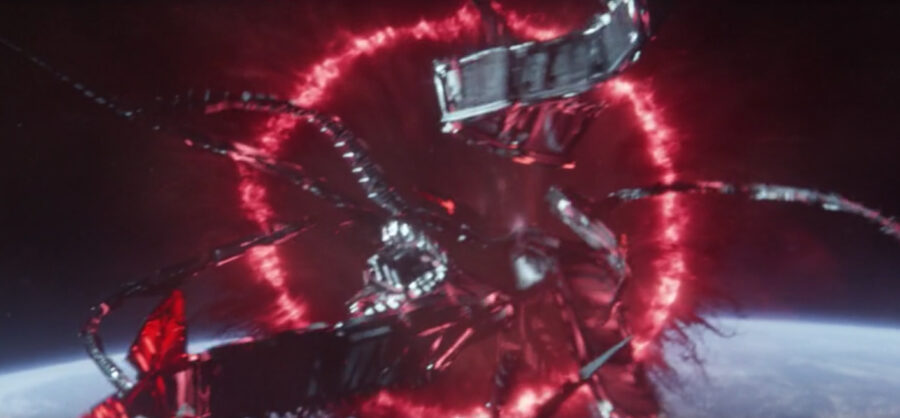
Basically they’re a mass of giant, robotic tentacles.
In Star Trek: Discovery season 2, when the artificial intelligence they were battling sent back a modified probe from the future to attack them, it looked like this…
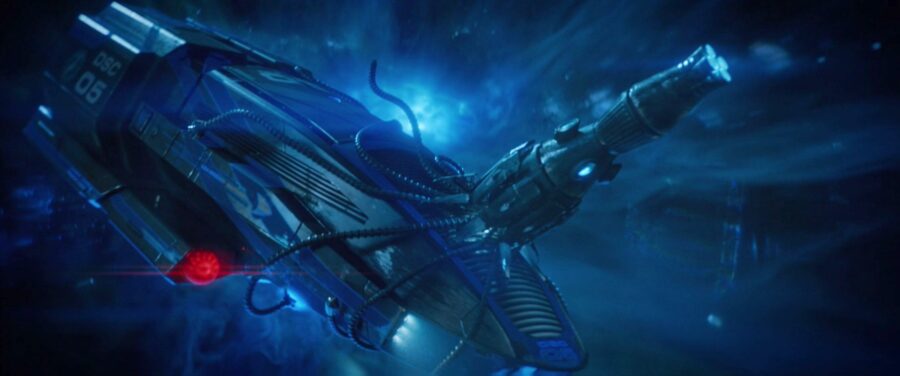
Also a mass of robotic tentacles, though an admittedly smaller ones.
Both enemies favor the use of robotic tentacles and it’s probably not an accident. It seems likely that in both shows they’re battling the same implacable, artificial foe. Expect to see even more about it in the next season of Star Trek: Discovery.
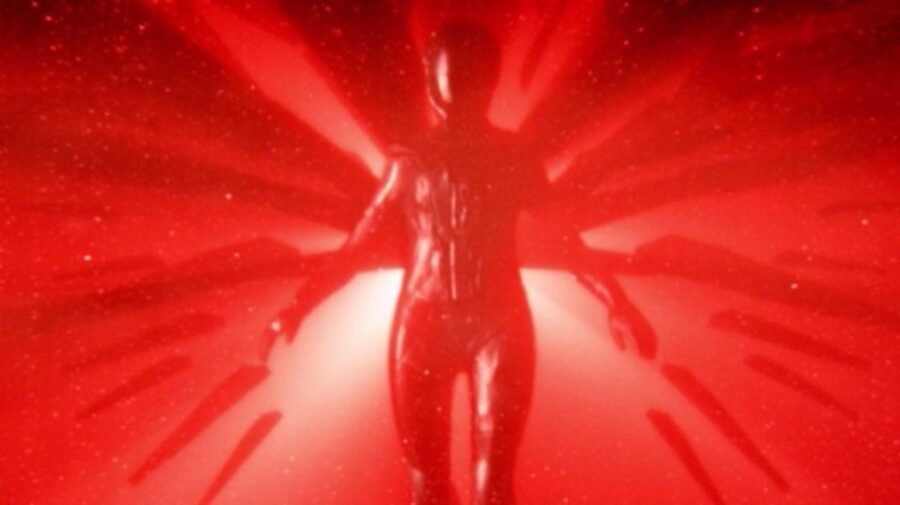
So far Star Trek: Picard hasn’t referenced CBS’s other Star Trek show Discovery, at least not overtly. But some fans think they’ve been dropping hints that certain parts of Star Trek: Discovery’s adventures exist as legends in Jean-Luc Picard’s time.
The possible connection was first spotted by Screen Rant where they note that during Picard episode 3 his friend Raffi compares her ability to see patterns in data to the way others might see “angels or ghosts”. This is noteworthy because religion and spirituality is supposed to have been completely done away with by the time of Gene Roddenberry’s Star Trek future. Angels shouldn’t be a thing anymore. Yet here Raffi is using them as a reference point.
The theory being thrown around is that this is a reference to Michael Burnham’s Red Angel, which went hopping through time in a seemingly supernatural like fashion in Star Trek: Discovery season 2. Some fans believe that’s what has renewed this interest in angels and ghosts in a previously non-religious civilization.
Seven Of Nine
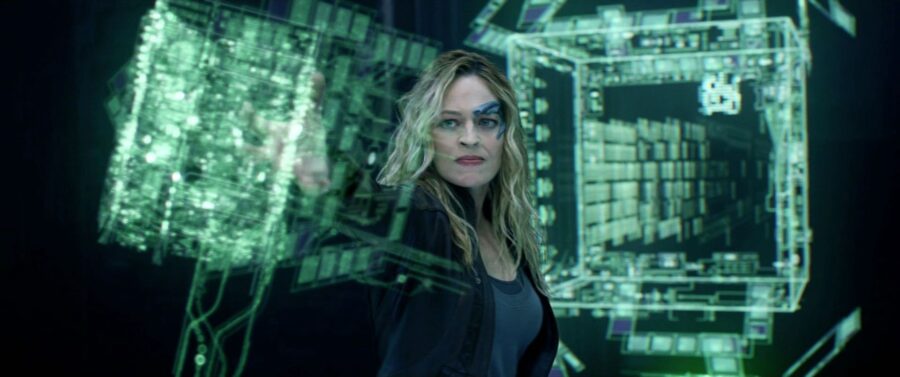
Star Trek: Picard showrunner Michael Chabon has pitched the idea of a Seven of Nine spinoff series to his producing partners. Fans on Instagram asked Chabon if he’d ever considered making a Seven and Elnor spinoff series with The Doctor or Janeway along to provide guidance and he had this surprising answer…
“Minus the Janeway, I pitched this very idea half in jest, half in earnest, to my partners many times as we were making the show this season… I’ve never found relationship between Janeway and Seven to be quite as compelling as I understand that many other fans of VOY do.”
— Michael Chabon on a Seven of Nine spinoff
Seven of Nine (Jeri Ryan) first showed up in Star Trek: Picard episode 4 and then episode 5 revolved around her almost entirely. By the end of episode 5 she was gone only return later in episode 8.
In Star Trek: Picard episode 8 Seven is forced to use the Queen connection to connect herself to the Artifact Borg cube, in an effort to create a new collective which can fight off the Romulans. She does so reluctantly, partly out feeling its immoral to assimilate Romulans, and partly because she’s afraid that once she reconnects she won’t have the willpower necessary to break free from the collective.
Seven of Nine does connect herself again and when her job is done, she breaks her connection saying that “Annika” (her real name) has more to do.
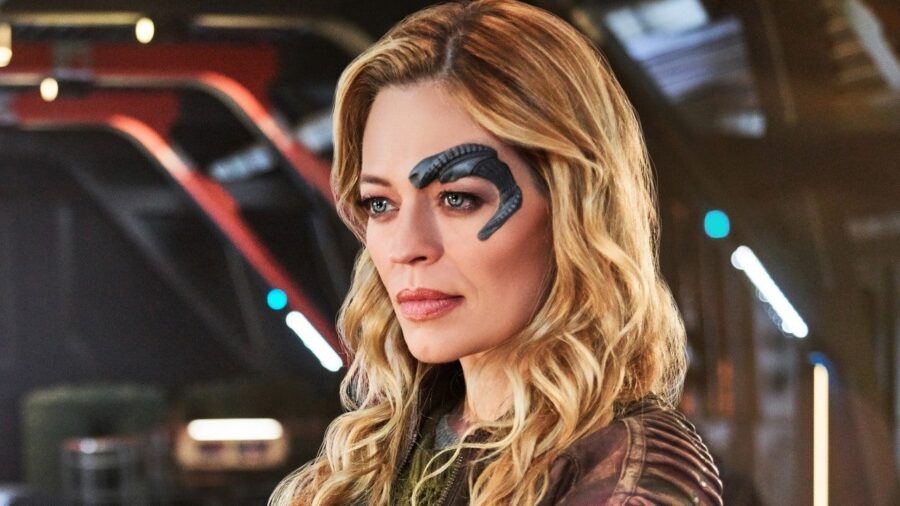
We did learn a lot about what Seven has been up to since her time on Star Trek: Voyager. Currently Seven of Nine is a Ranger, a group of vigilantes attempting to bring law and order to an area of space abandoned by the Federation. She’s also extremely angry and bitter about the whole thing, though she refuses to give up.
Episode 5 (titled Stardust City Rag) revealed that Seven of Nine continued her relationship with Icheb, the other Borg de-assimilated during her time on Voyager. She raised him as a son and Icheb eventually joined Starfleet and became a science officer.
Unfortunately, we also learned and even saw Icheb captured and tortured by a vicious woman who hunts Borg for parts. Seven beamed in at the last second to save her son, but was ultimately too late. Icheb was so badly hurt she killed him herself, to spare him suffering.
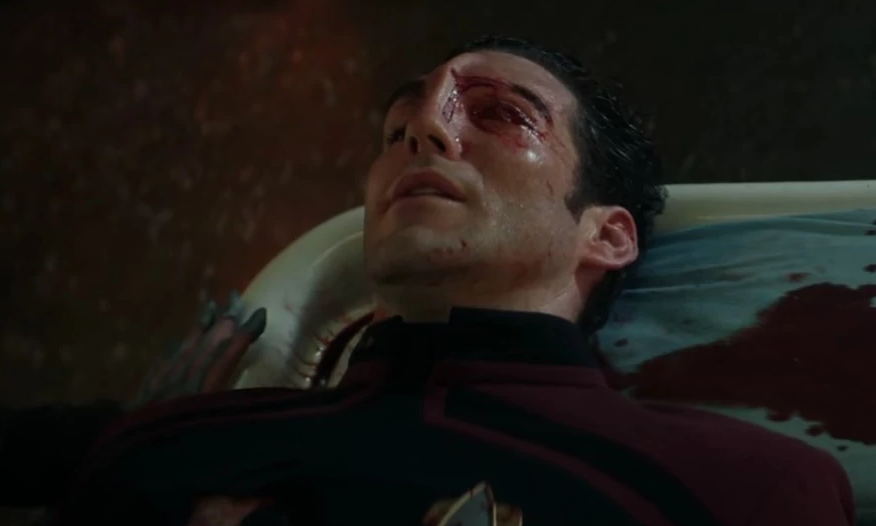
Seven feels Icheb’s death was at least partly her fault. The woman who captured him and ripped out his implants is named Bjayzl and she was also apparently Seven of Nine’s lover. Bjayzl infiltrated the Rangers and seduced Seven of Nine. They had a relationship and during that relationship it was Seven who told her about Icheb, and she used that information to capture him.
Icheb was played by Manu Intiraymi on Star Trek: Voyager. They recast the character for his brief appearance on Picard. Manu Intiraymi is however, still a working actor and continues to work elsewhere.
Though Seven still goes by the name Seven of Nine in public, apparently in private she goes by her original given name of Annika. Her former lover called her by that name during the course of Star Trek: Picard episode 5.
Jeri Ryan is glad to be back working on Star Trek, but apparently it wasn’t easy for her. She was “petrified” to come back and felt pretty lost when she showed up to film her first scene.
Jeri Ryan explains, “My first scene, the big scene, was the one you see in the trailer, when we’re in his [vinyard’s] office/ready room. That was my first day on set. It was daunting — not just because it was Patrick — but because I was still petrified —or ‘Patrick-fied’ — of if I could find the character again. I was still trying to figure out who she was. I was so fortunate because Jonathan Frakes was directing my first episode. So with that, I knew I was in good hands. [Frakes], more than anyone else, would get the importance of revisiting and being true to these characters. Because the challenge for me is: Where has she been for nearly 20 years? Finding her voice was the hardest thing for me; when I read the first script — I just couldn’t hear her voice anywhere.“
Though we’ve never seen Jean-Luc Picard and Seven on screen together before, they clearly seemed to know each other at least a little. Still it was made clear they aren’t exactly close and probably never have been. They’re mostly acquaintances. .
When asked about playing Seven of Nine on Star Trek: Picard Ryan had this to say..
“I like her struggle. I like her struggle to fit in and find out what humanity was and how to be a part of that again. What I like now, playing her on the new series, is that she’s still kind of trying to figure out where she fits in and make sense of what humanity, and other races, are still doing to each other. So, I like her struggles and her discoveries.“
– -Jeri Ryan on what she likes about Playing Seven on Star Trek: Picard
By the end of Star Trek: Picard’s first season it seems as though Seven of Nine has joined the crew of the La Sirena permanently. She’s sitting at the navigation console, ready to serve a role aboard the ship. Whether she’ll still be there if the show returns for season 2 remains to be seen.
Star Trek: Picard’s Crew
In episode 3 Jean-Luc Picard finally put together a crew, got a ship called the La Sirena, and set off for adventure. In episode 4 the crew added two new members. By episode ten his crew has swelled to seven total. They are…

Jean-Luc Picard, Admiral, Retired – Jean-Luc has a new robot body and a new lease on life. He seems content to go galaxy hopping aboard the La Sirena. What exactly his role will be in the future is unknown. Rios is the ship’s Captain, so that job is taken. Jean-Luc seems to be along as some sort of elder statesman advisor.
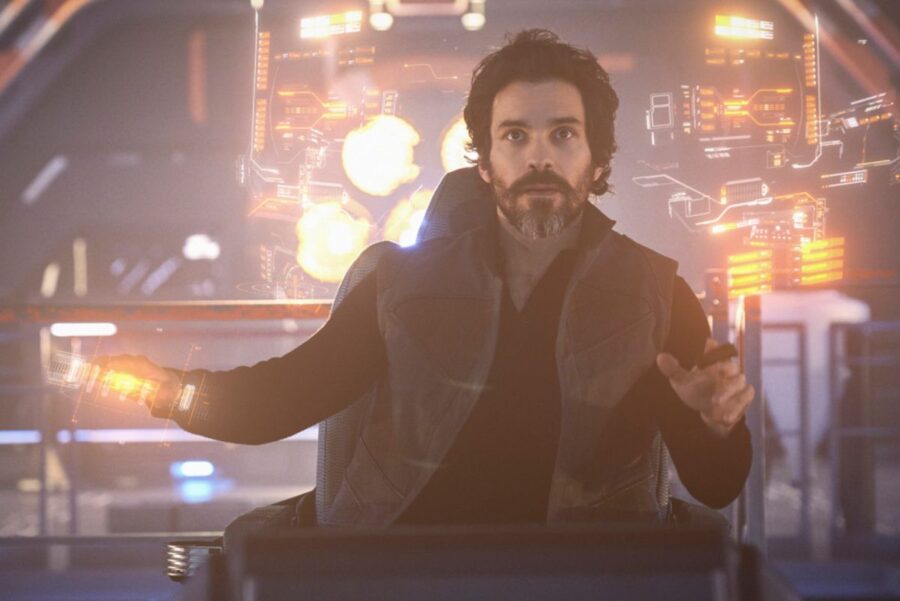
Cristobal Rios – Rios (played by Santiago Cabrera) is the pilot and owner of the shp Picard and his crew are traveling on. He’s your basic Han Solo type, an ex-Starfleet officer with a chip on his shoulder. Once upon a time Rios was a first officer aboard a starship. While there his Captain was killed and Rios ended up with his brains “splattered all over” him. Picard says he can see that Rios, despite his protestions, is really Starfleet all the way through, though.
Rios’s ship uses a number of emergency holograms to perform various functions. These work in much the same way The Doctor (an Emergency Medical Hologram) did on on Star Trek: Voyager. All of these holograms look exactly like Rios, but have totally different accents depending on their jobs. The holograms also have different personalities and Rios seems to resent them, even though he spends a lot of time talking to them.
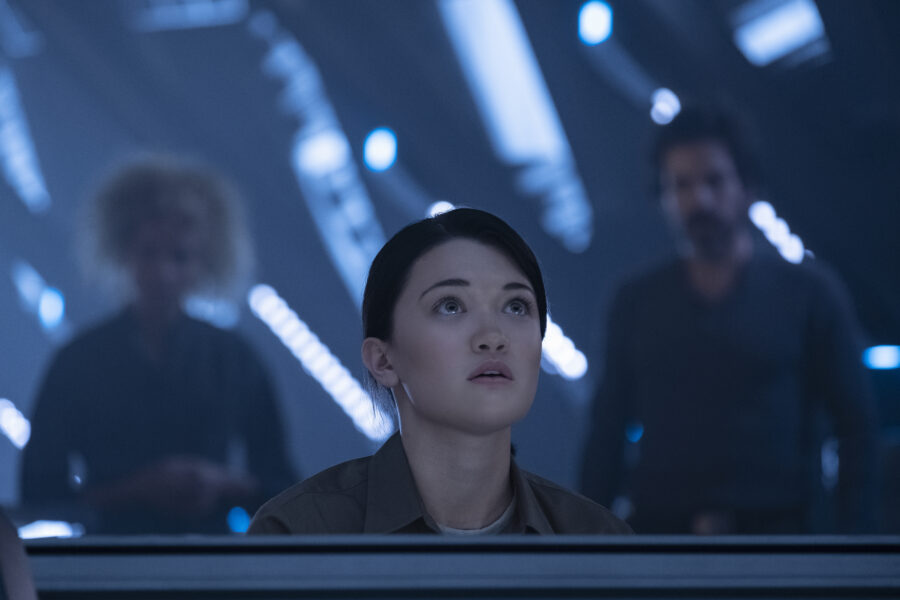
Soji – Soji is an android and the daughter of Data (sort of). Originally she was bent on wiping out all biological life in the galaxy by unleashing some robot tentacles, but Picard convinced her to change her mind. Now she’s decided she’s a galaxy hopper, so she’s hitching a ride on the La Sirena. Given her superhuman strength, super intelligence, and sweet hacking skills she should be useful.
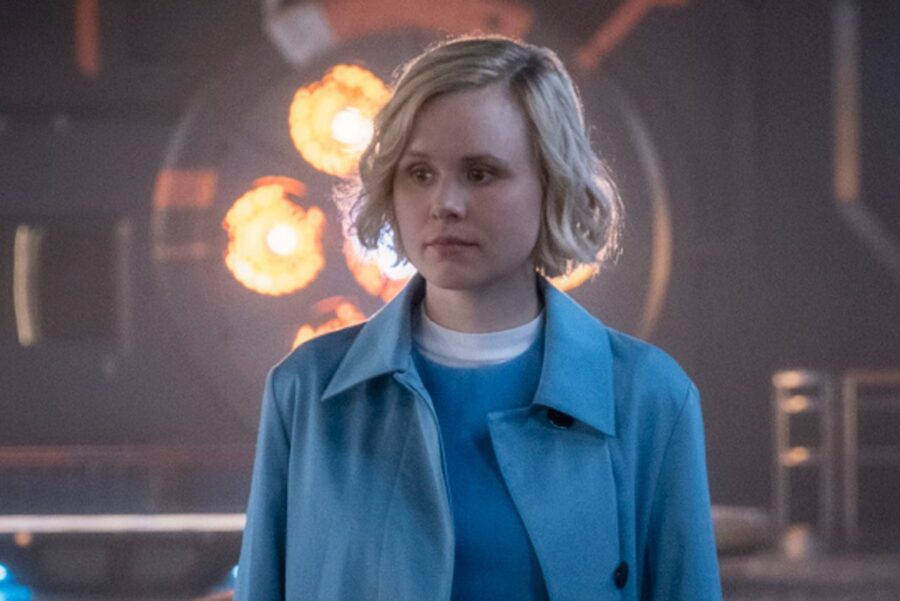
Dr. Agnes Jurati – Agnes (played by Alison Pill) is the cyberneticist from the Daystrom Institute, who we met in Star Trek Picard’s first episode. She insisted on going with Jean-Luc, offering her services as an expert on all things android and her former boss Bruce Maddox. Given that Picard’s on a mission to find an android, he let her come. Now she’s sticking around and everyone seems to be doing their best to forget she’s a murderer. Her role on the La Sirena seems to be that of a medic.

Raffi Musiker – Raffi (played by Michelle Hurd) was Amiral Picard’s first officer aboard a ship called the U.S.S. Verity (not mentioned in the show, but explained in the Countdown to Picard comics). It was from this ship that Jean-Luc had planned to lead his rescue fleet to save the Romulans. When Admiral Picard resigned from Starfleet, Starfleet fired Raffi as some kind of punitive measure for working with Picard. She’s since let herself go, become an angry, drug-addicted drunk who seems to be bitter that she’s poor… even though there isn’t supposed to be any money in the future. She hates Picard for not checking up on her until he needed something from her, but she seems to have forgiven him..
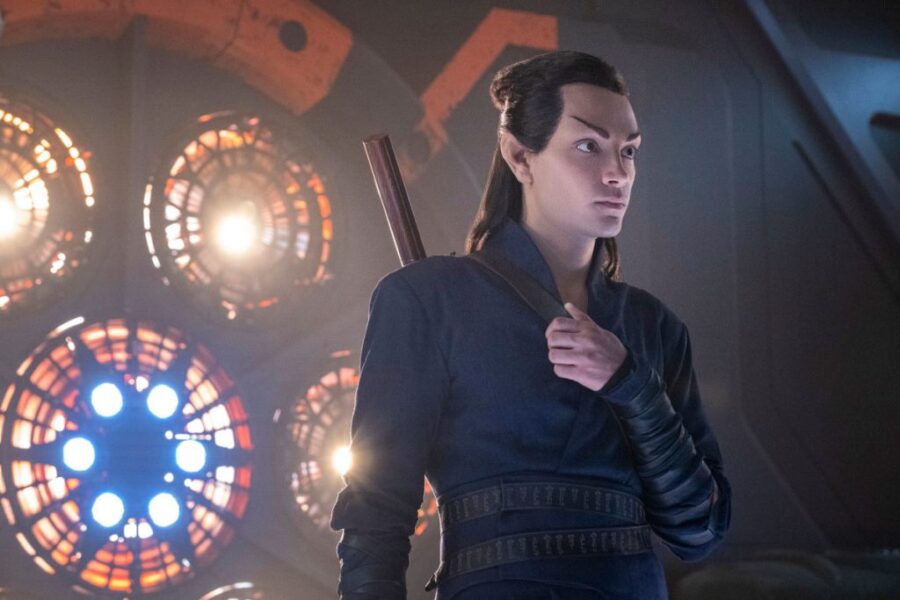
Elnor – Raised by Romulan Assassin Nuns (yes that’s a thing) on a Romulan refugee planet, Elnor is a highly skilled killer who has sworn his sword to Picard’s cause. In order for someone of his order to swear to a cause, they must believe it is a lost cause, which tells you what he thinks of Jean-Luc’s mission. The assassin nuns who raised Elnor believe in absolute candor at all times. That means any time Elnor thinks or feels something he’s going to say it, no matter the cost. That should result in a fair amount of humor and tension in equal parts.
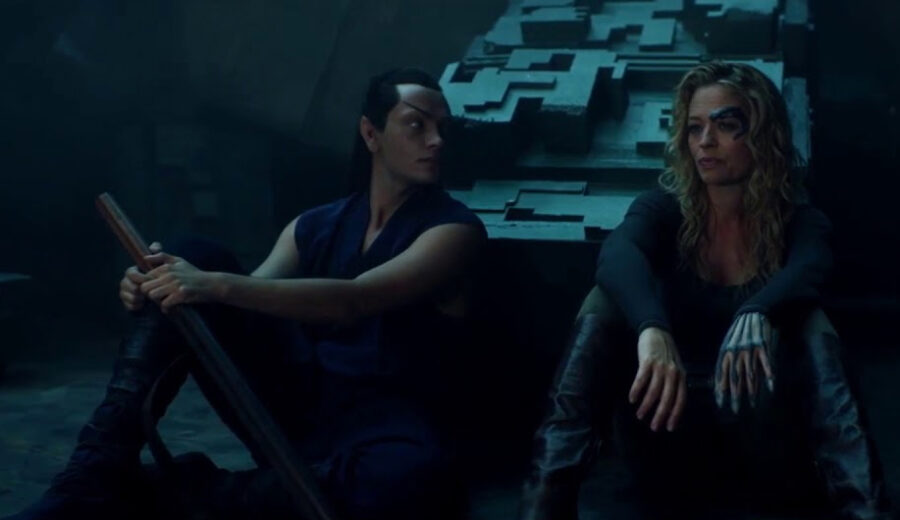
Seven Of Nine AKA Annika Hansen – By the end of Star Trek: Picard episode 10, Seven seems to have joined the crew of the La Sirena. When Jean-Luc gives the order to engage, she’s sitting at the navigation console in front of Rios executing his orders. Whether she’ll still be there if the show comes back for Season 2 is anyone’s guess, but for now she seems content to travel with the La Sirena crew.
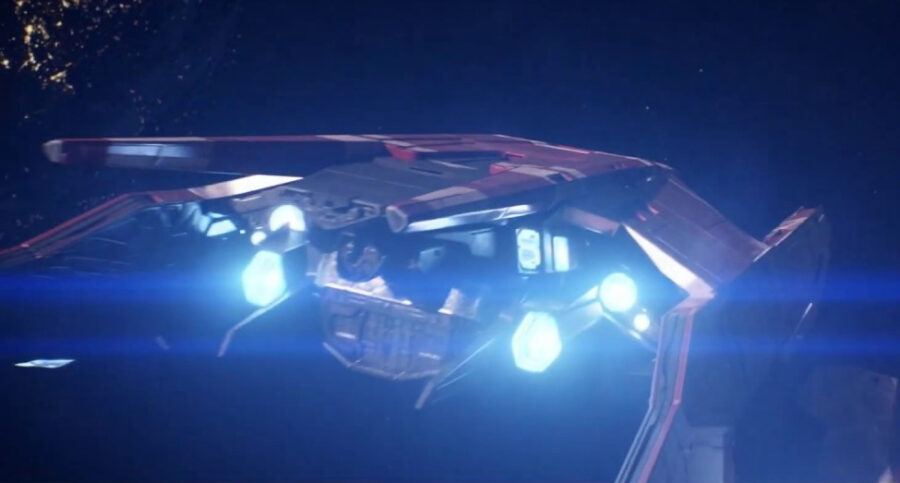
La Sirena – Jean-Luc and his crew are traveling on a private, unregistered starship owned by pilot-for-hire Rios. The ship’s name is La Sirena and Jean-Luc observes that it’s meticulously maintained according to Starfleet regulations.
Who Is Alton Soong?
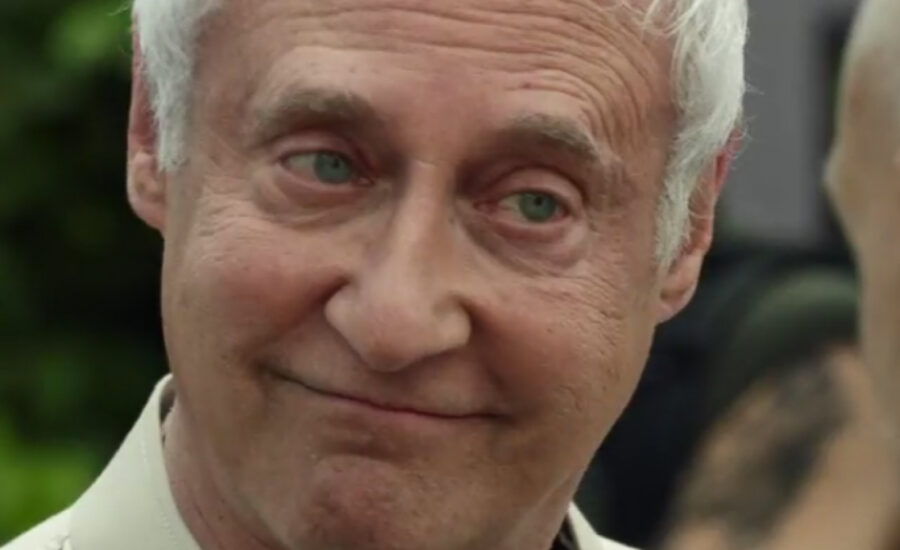
In Star Trek: Picard episode 9 we’re introduced to a new character named Alton Soong. He’s played by Brent Spiner, who also plays Data. And Alton Soong looks exactly like Data, if Data had ever actually aged into an old man.
Alton Soong claims to be the secret and as of yet totally unknown in Star Trek son of doctor Noonian Soong. Noonian Soong is Data’s creator and, before Bruce Maddox managed it, was the only person who’d ever managed to make an Android with a stable positronic matrix. It’s worth noting, for anyone who’s never seen Star Trek: The Next Generation, that Noonian Soong was also played by Brent Spiner.
Apparently Alton Soong has been hiding out with Bruce Maddox all this time, helping him make androids. Only it seems Alton doesn’t have his father’s knowledge of positronics. He tells us he’s “the bodyman” and that Maddox handles the brains.
Together Alton and Bruce created a small colony of Soong-type androids on a far off planet. They’re all nearly as advanced as Soji and they all have a little bit of Data in them. Some of them, however, aren’t particularly friendly to organics. I think it’s safe to assume Data would not approve.
Alton is working on a Golem, which is apparently a blank android body into which a human consciousness can be transferred. His goal, it would seem, is to transfer his mind into the android body.
Who Left The Ancient Warning?
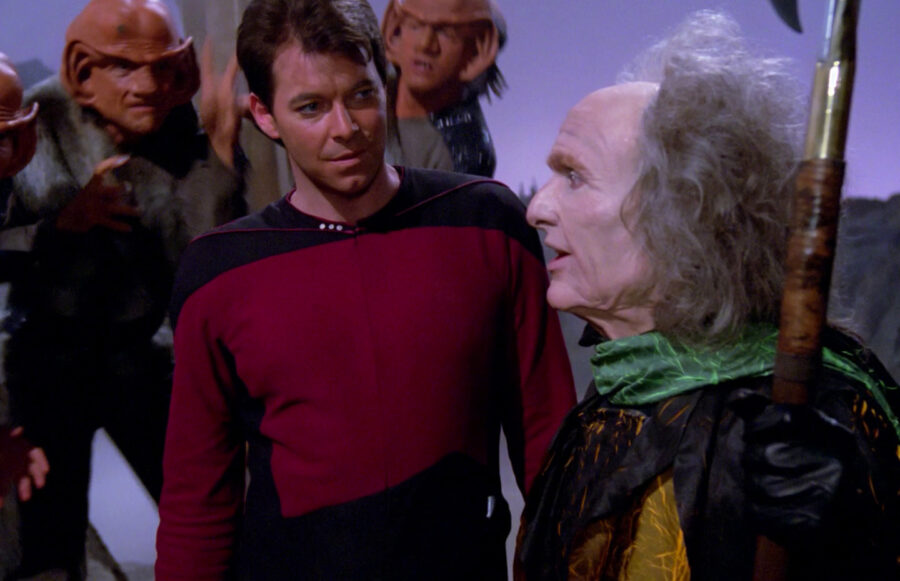
In Star Trek: Picard episode 8 we learned that an ancient and incredibly alien race left a warning against allowing the development of artificial life. The waning claimed that the race who left the warning made the mistake of developing artificial life and was destroyed for it, by an even more powerful, unknown force.
As a sign post to draw others to the warning, this powerful civilization moved 8 suns together and put their warning on a single planet orbiting around them. That warning was found by the Romulan Empire.
But who was that ancient alien race? Picard hasn’t told us yet, but the series’ showrunner Michael Chabon revealed their identity to fans on his instagram: It’s the Tkon Empire.
That name should sound vaguely familiar. The Tkon Empire shows up once, and only once, in previous Star Trek. It’s featured in season one of Star Trek: The Next Generation in an early episode called “The Last Outpost”.
In that episode, we learn that the Tkon Empire was a powerful, galaxy-spanning empire with the power to move entire stars. Their civilization was destroyed under mysterious circumstances hundreds of thousands of years ago when their sun suddenly went nova.
Sound familiar? That’s exactly what happened to the Romulan Empire. The same Romulan Empire that discovered the warning against artificial life left by the Tkon in the first place.
What doesn’t fit here is that in Star Trek: Picard episode 9 we learned that the message was ACTUALLY left by a race of super-synths who live outside the Galaxy and are waiting to come in and wipe out all organics should the synths in our Galaxy ever need any help.
I have no idea how that can possibly fit with the TKon, since the TKon clearly aren’t super-synths. Maybe Chabon was just messing with us?
Star Trek: Picard didn’t add any further spoilers to help us identify this alien race in it’s final episode, episode 10. They did show us some gigantic robot tentacles reaching out of a portal to a place that looked a lot like hell. Actually the scene seemed to be cribbed from the shot in the first Avengers movie when Tony Stark flies through that portal where Thanos’ army is waiting. But I’m pretty sure that wasn’t Thanos in the portal on Picard.
The Fate Of Riker And Troi
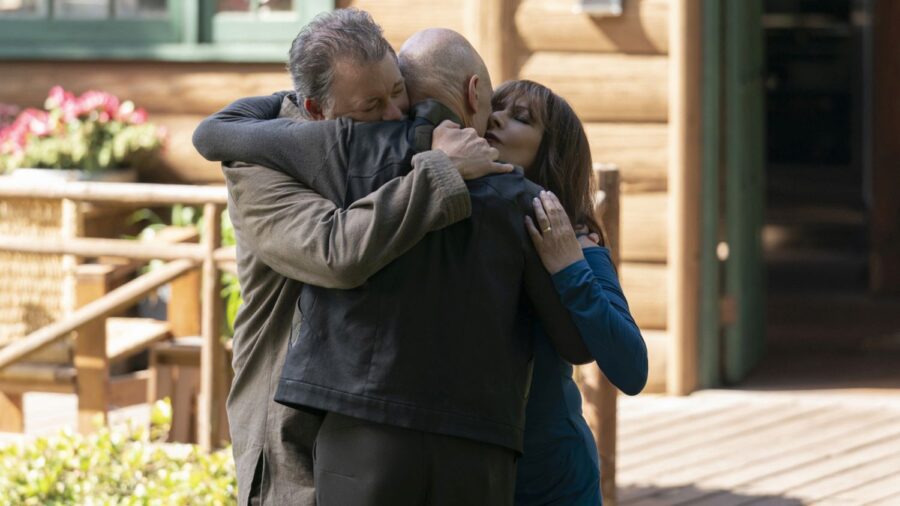
Jonathan Frakes apparently was never happy with the way Star Trek: The Next Generation handled the relationship of Riker and Troi. In fact, he’s still not happy. Talking to SyFy Wire he says…
“At the beginning of The Next Generation, Troi and Riker were lovers before they transferred to the Enterprise, and then that [story] was buried so that they could be whatever — available to relationships with random aliens. [Laughs.] But, we held onto this relationship and insisted to each other that we maintain it. And as a result —I think — it resurfaced in the final movie [Star Trek: Nemesis] in which the two characters were married. It was very important, this relationship, we take it very personally and we feel wonderfully vindicated to see them return.“
— Jonathan Frakes
Because of his feelings on the way their relationship wasn’t handled during the course of The Next Generation, he’s particularly happy with the way it’s been handled in the future of Star Trek: Picard. He says…
“When they introduced this story that Marina [Sirtis] — Counselor Troi and I — have a family and live on a planet that looks like rural Maine, it felt like a gift. The obvious gift being that we got to play together with our friends from 33 years ago, but it’s also the idea that Marina and I had both held onto a very specific story for these characters. We held it close to our hearts for many years, and the writers had seemed to give up on it.“
— Jonathan Frakes
Star Trek: Picard episode 7, titled “Nepenthe” visited the home of Will Riker and Deanna Troi. There we learned what their life has been like since we last saw them in Star Trek: Nemesis.
After the events of Nemesis, Riker and Troi went on serving together aboard starships. They eventually had a child together, whom they named Thaddeus Troi-Riker. They continued their careers and Thaddeus was raised aboard starships.
As a child born amongst the stars, Thaddeus fantasized about what it would be like to have a home world. So, he invented and imaginary one, complete with fictional languages spoken by the world’s residents. His family learned many of these languages too.
Eventually Thaddeus contracted a rare disease, a rare disease which could only be cured using the positronic matrix present in the mind of an android. Unfortunately by then, androids had been banned and positronic matrices no longer existed. That meant Thaddeus’ disease would be fatal.
In response, Will Riker and Deanna Troi retired from Starfleet and moved to the planet Nepenthe where the soil was said to have regenerative properties. There they had another child, a little girl whom they named Kestra Troi-Riker.
Thaddeus eventually died in his late teenage years, but Kestra lived on with her loving parents.
The Troi-Riker home on Nepenthe is cabin located deep within an idyllic woodland setting. However, Will Riker being Will Riker, it’s been outfitted with the latest technology including its own shields and high-tech scanning software.
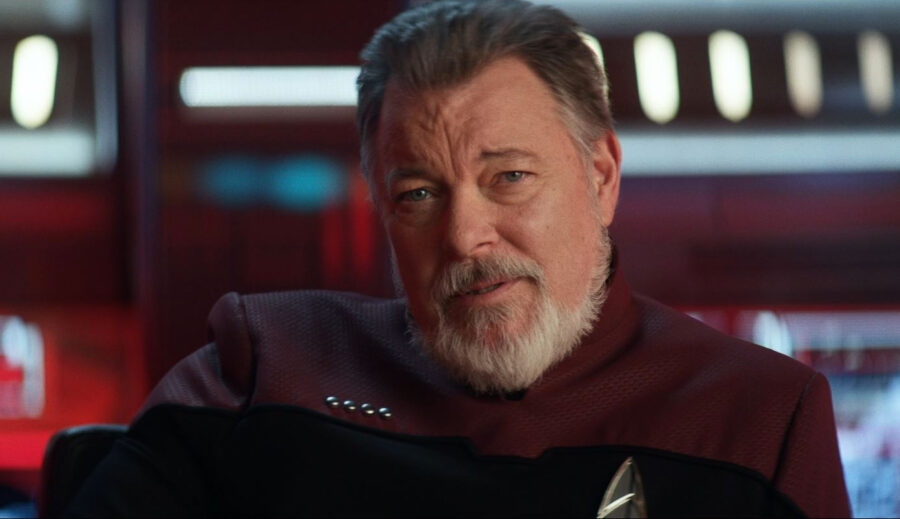
While William Riker had been living in semi-retirement, by the end of Star Trek: Picard he has reactivated his commission with Starfleet and regained the rank of Captain. Captain Riker shows up with a fleet of the latest starships, firmly in command and on the bridge where he belongs. Whether he’ll stay in Starfleet or go back to retirement with Deanna and his daughter is anyone’s guess.
Picard Is Dead, Long Live Picard
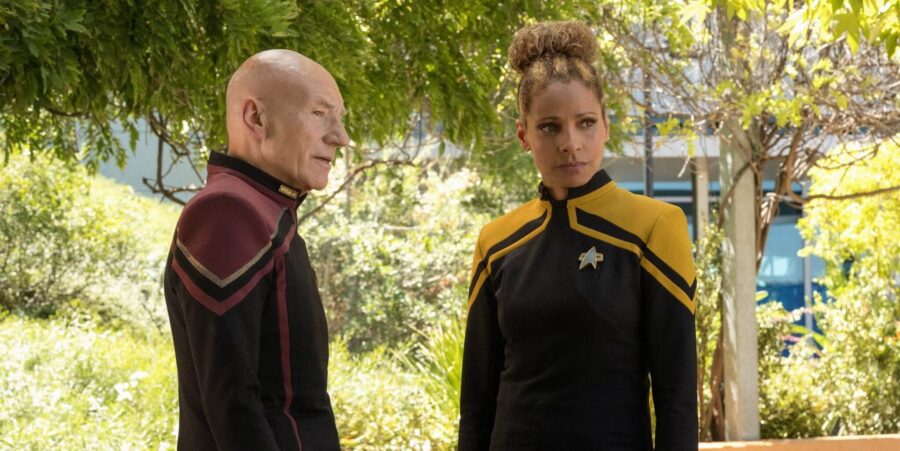
Star Trek: Picard episodes 2 & 3 shed new light on the current state of Jean-Luc Picard. Let’s start with his career.
We know from episode one that Admiral Picard resigned Starfleet in protest decades ago.
In Star Trek: Picard episode two we learned that Starfleet is still mad at him and basically wants nothing to do with him. When he went to them for help, they told him to pound sand. So he did.
In episode three we learned that Jean-Luc’s resignation from Starfleet wasn’t so much a protest as a strategic ploy that blew up in his face. When Starfleet decided to suspend efforts to rescue the Romulans, then Admiral Picard demanded they resume the rescue and threatened resignation in order to push the Federation into seeing things his way. He never expected his resignation to be accepted, but it was, and Jean-Luc soon found himself setting outside Starfleet headquarters without a job.
What about Picard’s health? The now elderly Jean-Luc paid for his career in Starfleet. Most specifically, the finale of Star Trek: The Next Generation in which Jean-Luc bounced around in time.
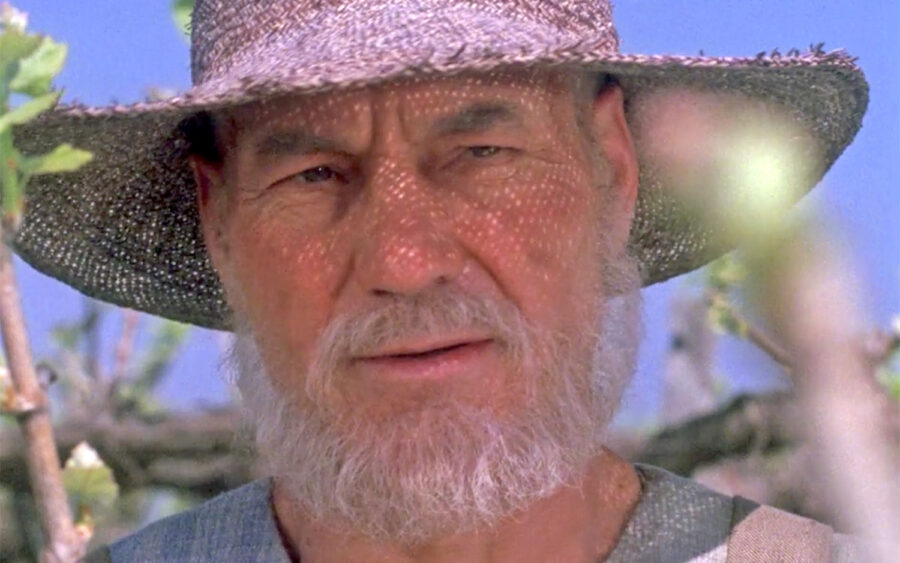
During the course of the Next Gen finale “All Good Things” we learn that Picard has something called “Irumodic Syndrome”. It’s a neurological disorder which leads to a lot of mental confusion and eventually death.
In the future Picard visits during the course of that episode, he has it and he has dementia as a result. But when the episode ends we learn Picard may have changed the future and that might hot happen to him. When the Enterprise’s doctor Beverly Crusher examines him, she tells him that he does have a small structural defect in his brain which could cause him to develop the disease, but that the odds of that ever happening are low.
Now here we are in Star Trek: Picard, where an old friend (the Doctor from his first ship the Stargazer apparently) tells Jean-Luc that the defect has turned into something deadly, and he’s on borrowed time.
That time ran out for Picard in the season finale when he was killed by his illness. He was then resurrected in a robot body which is identical to his old body in every way. It even ages in the same way, which means he’ll die a natural death in a few years. The only difference is the structural defect in his brain is now gone and technically Jean-Luc is an android, though no one will notice or care.
Data’s Daughter

So the girl in Star Trek: Picard was created by Bruce Maddox using some vaguely unexplained Data essence. That makes her sort of his daughter, or at least we’re supposed to believe the spirit of Data (if not his memories) somehow survives in her.
When asked about his reaction to the episodes big twist that Daj is Data’s daughter, actor Brent Spiner had this to say to ComicBook.com: “Well, I didn’t really have a say. I’m happy just for the saga of Data to continue. If it’s through his progeny… then I’m pleased.”
Except the girl we meet in the first episode, Daj, is dead. She’s killed by some sort of Romulan assault squad, after her for unknown purposes. Don’t worry, there is another.

For whatever reason these androids are made in pairs and Daj has a twin sister named Soji. We learn at the end of Star Trek: Picard’s first episode that this sister is working with the Romulans on reclaiming a Borg cube. Soji has gotten romantically involved with a Romulan spy named Narek who is in league with the team of killers who murdered her sister.
In Star Trek: Picard episode 6 that Romulan spy tricks her into revealing the location of her home world. The spy tries to kill her and Soji is activated, realizing she’s not human.
Data And B4
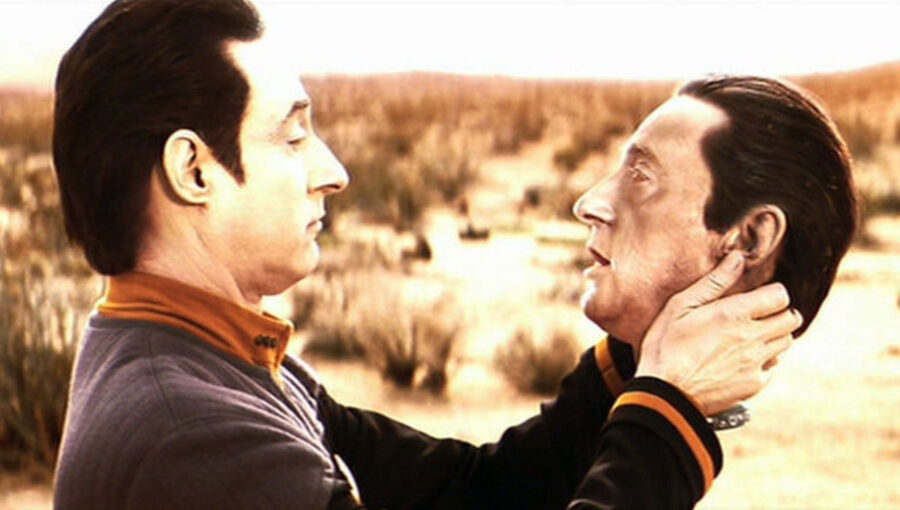
In the 2002 movie Star Trek: Nemesis, Data attempts to backup his memories in the brain of B4, an inferior early-stage Soong android which looks identical to Data. He’s uncertain whether B4’s positronic brain has the computing power necessary to handle his backup, but when Data dies saving Picard’s life, the movie left us with the faint hope that Data might somehow live on inside B4.
That hope it seems, was no hope at all. In Star Trek: Picard we learn that Data’s backup failed totally. Almost nothing of Data survived in B4. As for B4, the Soong prototype was disassembled and currently sits gathering dust in a box at the Daystrom Institute in San Francisco, Earth.
In Star Trek: Picard episode 10 we learned that Bruce Maddox managed to reconstruct Data’s personality and all his memories and in a sense, resurrect his consciousness. For some reason, Maddox never gave this consciousness a body, so Data has been stuck inside a quantum computer for untold number of years.
When Jean-Luc Picard dies and his memories put into the same computer, he encounters Data, who tells him he wants to die. It seems Data feels immortality is not for him, and in the ultimate expression of his quest to become human he tells Picard he wants to have lived a finite life. Granting his wish, Picard uplugs the simulation containing Data’s consciousness, ending his life.
But couldn’t he just plug him back in at any time? You’d think so, especially if the writers of Star Trek: Picard season 2 start to get bored.
Picard’s Mission
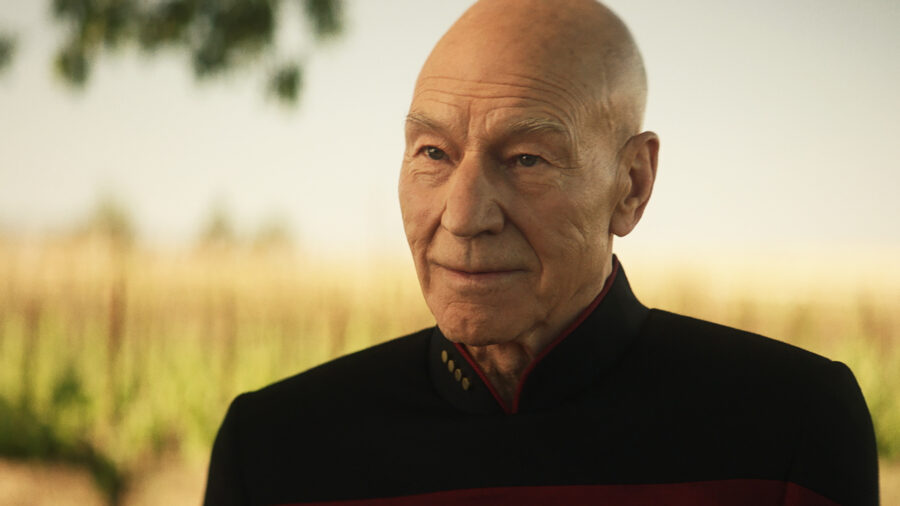
Picard learns Daj has a sister and at the end of Episode 1 sets himself the task of finding her and rescuing her from the clutches of the Romulans. Once she was rescued he helped her find her people. Once she found her people, he had to talk her out of genociding all biological life in the galaxy. Luckily, he was successful in all these endeavors.
The Romulans And The Artifact
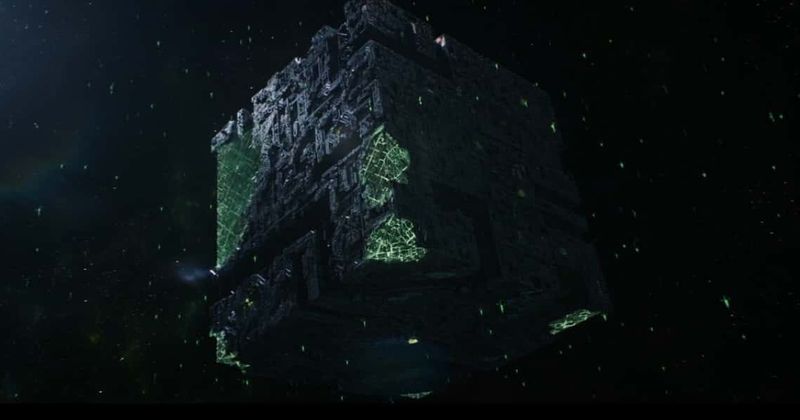
In episode 2 and 3 we learned the Romulans using the Borg cube to make money.
The cube is apparently a battle damaged remnant from a battle. It has been totally severed from the collective so the Borg are no longer interested in it. What’s mysterious is how the cube got severed from the collective. Apparently it happened shortly after the Cube assimilated a small Romulan scout ship. No one seems to know why the Cube was suddenly severed from the collective, but they’re taking full advantage of it.
The Romulans have taken over and are working to dismantle the cube and sell off the technology for profit. The Borg cube contains numerous living drones. Some of these are having their parts removed by Romulans in order sell their implants. Others are still wandering around the ship in areas known as “grey zones” which workers on the cube are instructed to exercise caution in while entering, though these drones are deemed to be lost and harmless.
Soji, sister of the character Daj was saw in the first episode, works on the cube removing implants from the Borg. Her motivations seem to be focused on helping to free the Borg from their collective enslavement, but the Romulans she’s working with are clearly just in it for the money.
The Romulans eventually abandon the Artifact and leave it in control of the ex-Borg XBs. The Artifact crashes on the home world of Bruce Maddox’s synths, and at the end of Picard season 1 is still there.
The Romulans And Artificial Intelligence
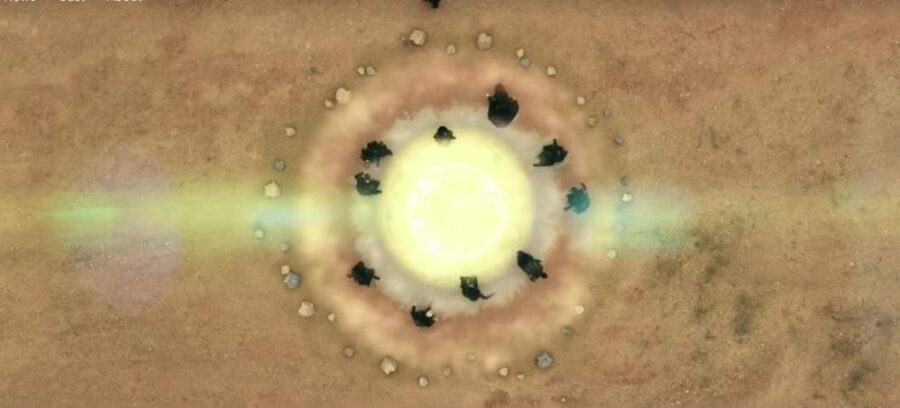
We’ve also learned over the course Star Trek: Picard that the Romulans hate synthetic life. They hate it so much they refuse to use any form of A.I. in any of their devices. Or at least that’s what they say now. It wasn’t until Star Trek: Picard Episode 8 that we actually learned why they hate synthetic’s so much.
Apparently the secret Romulan order of the Zhat Vash know of an even more secret planet, where an ancient and unknown alien race left a warning about the dangers of alien race. The warning is so dire and so unsettling that those who receive it often end up committing suicide. Those who don’t kill themselves end up dedicating their life to eradicating all traces of synthetic life throughout the galaxy.
The warning isn’t that Synths themselves are dangerous. Rather the warning is that somewhere out there is some horrible, supremely powerful alien intelligence watching and waiting for signs of synthetic life in the universe. When synthetic life is detected, this horrifying creatures move in and wipe out not only the androids but their creators in ways so terrible no one will even talk about it.
The idea of Romulans hating A.I. and refusing to use it is strange because in the Star Trek: The Next Generation episode “The Defector” a Romulan Admiral Jarok tells Data, “I know a host of Romulan cyberneticists who would love to be this close to you.”
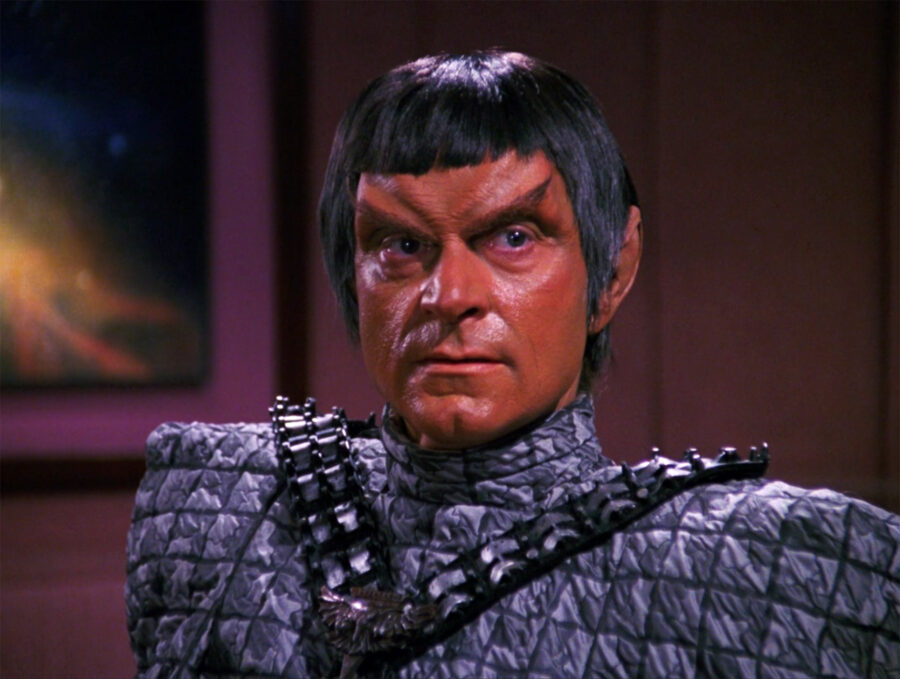
When asked about this apparently mismatch between the continuity of Star Trek: The Next Generation and Star Trek: Picard, showrunner Michael Chabon offered this explanation: “Being a ‘Romulan cyberneticist’ is kind of like being a ‘Nazi doctor.” Chabon suggests that the events of Picard don’t conflict with that line, they merely change the subtext of that scene from “The Defector”.
It’s worth noting that Chabon seemed to just make this explanation on the spot, so odds are this isn’t really something the Picard team has actually thought about. But it’s a good enough explanation, for now.
For years now, there’s been a strange discrepency in the appearance of Romulans on Star Trek. Some of them have forehead ridges like the ones on Zhaban on the left, and some of them don’t like Laris on the right in the image below…
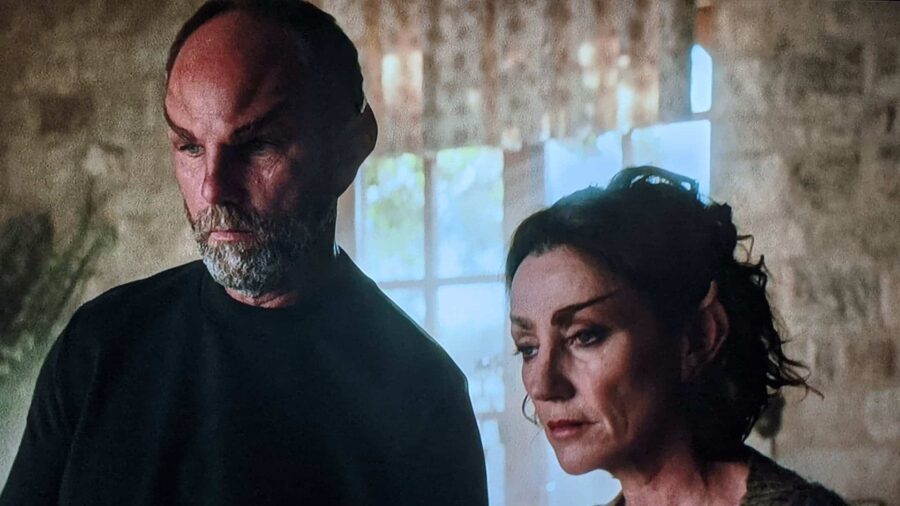
Before Star Trek: Picard fans assumed this conflict was simply a function of how much makeup the art department decided to use. Never have both types of Romulans appeared in the same Star Trek show, at least not until Picard. Now we’re getting both types and it’s on purpose.
What’s up? Star Trek: Picard showrunner Michael Chabon gave us this explanation: “If you are referring to the forehead ridges, they are a facial feature common to the inhabitants of the northern hemisphere of Romulus. Denizens of the southern hemisphere have smooth foreheads. There is an entire, quite scabrous vocabulary of mutual insult in the Romulan language based around this anatomical divergence.”
In Star Trek lore, the Romulans are supposed to be the cousins of Vulcans. They’re an offshoot, a group of people who left Vulcan thousands of years ago when things got too logical, and went off to live a more passionate existence on Romulus. Given Chabon’s explanation we now know that at some point there was an evolutionary divergence and some continued looking like Vulcans and some gradually underwent this slight, physical change.
LGBTQ Characters
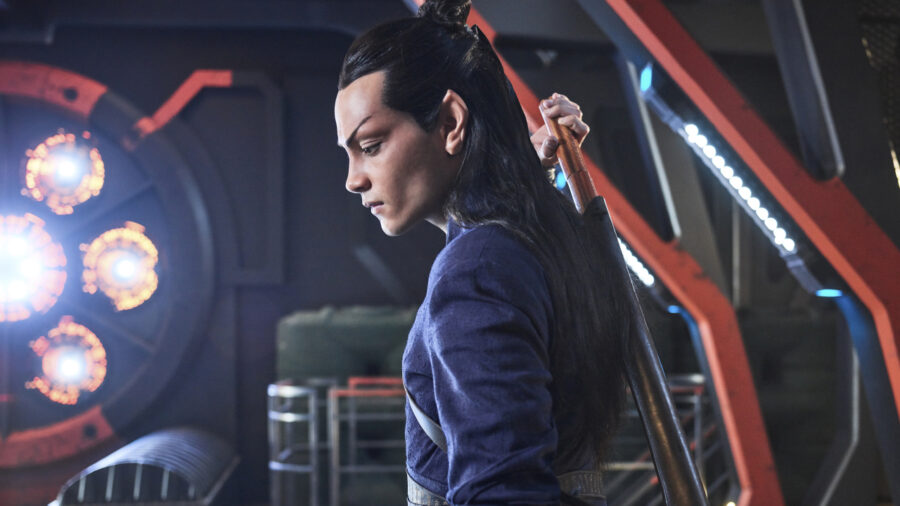
Star Trek has historically been on the cutting edge of diversity, but the franchise never really had a main character who’s a member of the LGBTQ community until Stahmets on Star Trek: Discovery. He blazed a trail that now it seems Elnor is going to follow on Picard.
Star Trek: Picard’s showrunner has started hinting that at some point Elnor is going to start exploring his identity. He dropped a hint while talking about the fluid nature of Romulan sexuality…
“The Romulan spectrum of sexual identity does not necessarily align with our present-day human understanding; romantic relationships are viewed -with pleasure-as opportunities to create conspiracy, and complex forms of polyamory, less concerned with differences of gender than of power, are not uncommon among them. Elnor has yet to really explore his own sexual identity. He is very much looking forward to doing so.”
— Michael Chabon on Star Trek: Picard
Why Star Trek: Picard Doesn’t Use Stardates
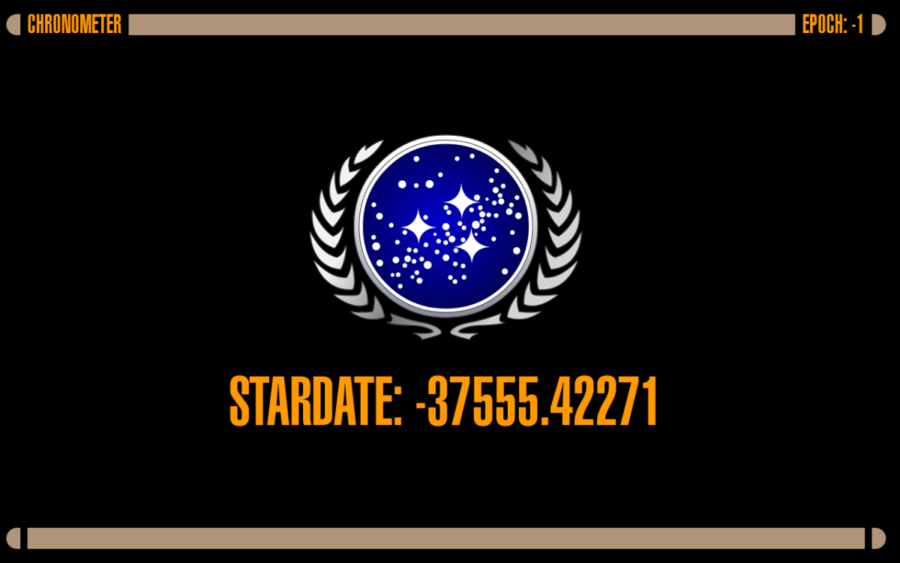
Star Trek: Picard has done quite a few things differently from the usual Star Trek formula. One of those is the lack of Stardates. Usually Star Trek measures time in Stardates, but Picard has totally abandoned them and it’s not an accident.
While answering fan questions showrunner Michael Chabon revealed that he got rid of them on purpose. His reason? He explains, “Stardates, in my view, and I know this is going to make some people mad, are a uniquely perverse form of uninformative information… Using a Stardate tells you precisely nothing. Even people who know how to interpret and convert them have to go off and interpret and convert them to have them mean something. Giving an audience the stardate is like if I wanted to know if I needed to put on a sweater or not, and you told me the temperature outside in Kelvin. ‘It’s 207 out.'”
What many fans have been quick to point out is that Stardates don’t exist to provide accurate date and time information. It’s part of world building, it’s part of making Star Trek feel like Star Trek and not just some other generic science fiction franchise.
Many have claimed that this answer reveals Chabon really doesn’t “get” Star Trek at all, or at least he’s not interested in the little details which made Star Trek different from all the other science fiction already out there. That could be why, a lot of the time, Star Trek: Picard doesn’t feel like Star Trek at all.
Hugh Of Borg On Star Trek: Picard
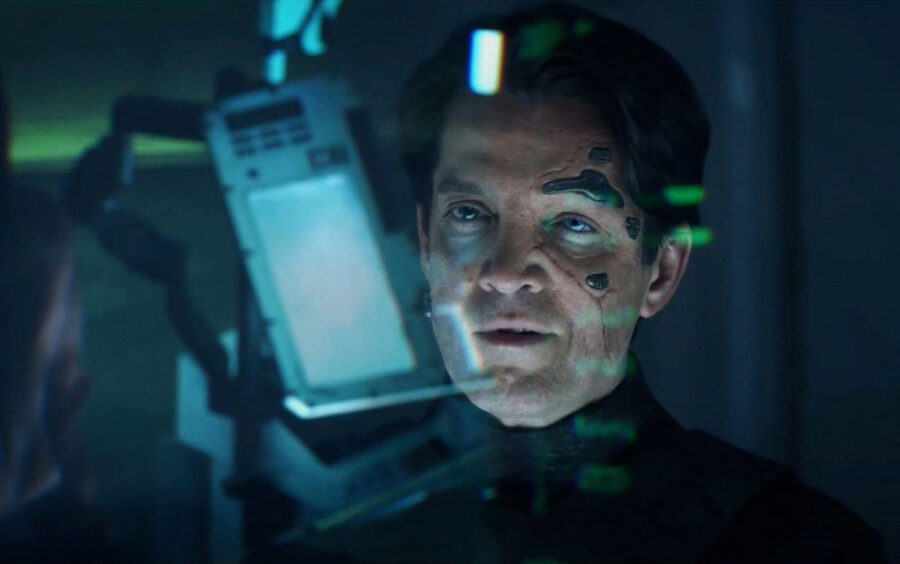
In episode one Star Trek: Picard introduced a Borg cube called The Artifact in the care of the Romulans.
In episode 3 we learned that Hugh (played by Jonathan del Arco who also played him on Star Trek: The Next Generation), the Borg once taught about humanity by Captain Picard and the crew of the Enterprise, is there on that cube. Hugh was first introduced in the classic Star Trek: The Next Generation episode “I, Borg”. He has long since been freed from the collective, and now he heads up the efforts to free other Borg on the Romulan owned Borg Cube called “The Artifact”.
In Picard episode 6 we learned that Hugh knows more about the Borg cube than the Romulans do. He’s kept a chamber with some kind of super-transporter in it, hidden from the Romulans. That chamber once belonged to the Borg Queen and was exclusively for her use. Hugh uses that chamber to get Picard and Soji off the cube while he stays behind with Picard’s Romulan assassin friend Elnor.
Unfortunately Hugh’s decision to stay behind on The Artifact would be fatal. In Star Trek: Picard episode 7 he is murdered by a Romulan agent after instructing Elnor on how to use the cube to defeat the Romulans.
So why did Picard’s creative team decide Hugh needed to die? Showrunner Michael Chabon provided this answer: “The initial germ of having Hugh involved, and that he would die, came from the natural discussions of: ‘What does it mean to have been Borg?’ So once we sort of committed to a big part of our season being about the lives of former Borg — Ex Bs, as we call them — and exploring how their lives are traumatized [from that experience], how they have or have not dealt with that trauma, and how they remain these objects of fear and hatred even though they were victimized by the Borg, to put Hugh in the center of that lead to what felt like a dramatic way to service the character’s end.“
It sounds like actor Jonathan del Arco wasn’t all that much more prepared for what happened to his character, Hugh, than the audience was. When asked about the scene he had this to say…
“I didn’t know until I was almost getting ready to shoot it. It’s probably a good thing I didn’t know way early because, the moment I did find out — which, of course, I was upset — it actually ended up liberating my work quite a bit. I mean, I was able to prepare — there were phone calls with [executive producer] Michael [Chabon] and everyone early on — but basically, I realized I had X amount of scenes and moments in which to work and do all the things I wanted to do with the character. And take some risks as an actor. And so, in a way, it was helpful, because, like when you know your character is going to die — the way humans know they are going to die in real-life — you kind of live for the moment. And that’s what I was able to do building up to the scene.“
— Jonathan del Arco on Hugh’s death
When it came time to shoot the scene, it sounds like he wasn’t really even in the best place to shoot it. He continues…
“I got a cornea scratch from the contact lens I was wearing. So I was basically not supposed to be on set that day at all. But we had to get it done, though I was kind of blind. I couldn’t really see anything…I definitely had a couple of martinis on the way home. I have very few lines in that scene — Narissa has all the dialogue — so I’m mostly reactive. It wasn’t scripted for me to sob at all at that point, but I did it — and every single time we had to shoot that scene, I lost my shit.“
— Jonathan del Arco on Hugh’s death scene
Star Trek: The Next Generation Cast Reunited
The only Star Trek: The Next Generation cast members to officially appear in the first season of Picard are Brent Spiner, Jonathan Frakes, and Marina Sirtis. But that doesn’t mean there weren’t more of the Enterprise bridge crew on set.
While the show was filming the Riker/Troi reunion episode “Nepenthe” LeVar Burton and Michael Dorn, who played Geordi and Worf on Next Gen respectively, showed up on the set. Here’s photo proof, with all of them hanging out together…
Why Star Trek: Picard Is So Violent
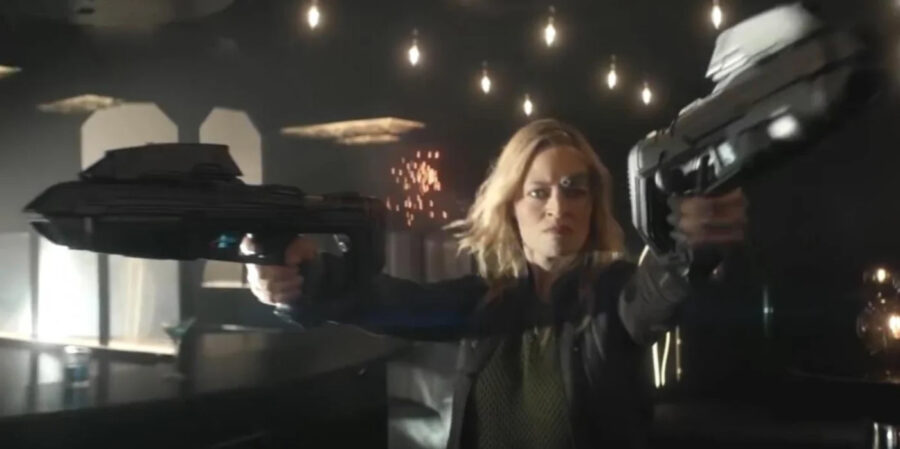
Star Trek: Picard showrunner Michael Chabon has been answering fan questions on Instagram. When one fan complained about excessive violence in the show, he had this to say…
“I am not unambivalent about the violence, myself. The choice was not made lightly, though it was made collaboratively, and therefore with a good deal of conversation and debate among the creators. And so I assure you that it is not there simply ‘because we can,’ or because we are trying, as you somewhat uncharitably put it, to be ‘in.’ My partners would all have their own reasons for its presence in this story, as some of us had our own reasons for shying away from it.”
–Michael Chabon On Violence
Chabon continued on, detailing his own view of the use of violence in storytelling…
“For me, it came down to this: there has always been violence (and even torture) in Star Trek. Sometimes that violence has been implicit, sometimes explicit, according to the dictates of censorship, the nature of the situation being depicted, the aesthetic of individual creators, or technical and/or budgetary limitations. And the reason that there has always been violence in Trek is that Trek is art, and there has always been violence—implicit and explicit—in art. It belongs there. It belongs in any narrative about human beings, even human beings of the future. Violence, often, *is* the narrative. Its source. Its engine. The question of whether it’s “too much” or not is ultimately a matter of taste. Personally, I come out closer to the “less is more” end. But that is just me.”
–Michael Chabon on Storytelling With Violence
In particular, with episode 5 of the show, he felt it was necessary because of time constraints.
“In the end, I saw how little time and space we had to convey a sense of Seven’s history post-Voyager, and the things that drive and haunt her. I decided, with my partners, that intensity was warranted. Seven lives outside the rational confines of the Federation, because that is where she finds her sense of purpose. But life is hard, out there. If it wasn’t, people wouldn’t need her help so badly. And she wouldn’t have found such a compelling reason to carry on, in spite of her history of trauma. But, I hear you.”
–Michael Chabon on Picard Time Constraints And Violence
Where Is The Enterprise?
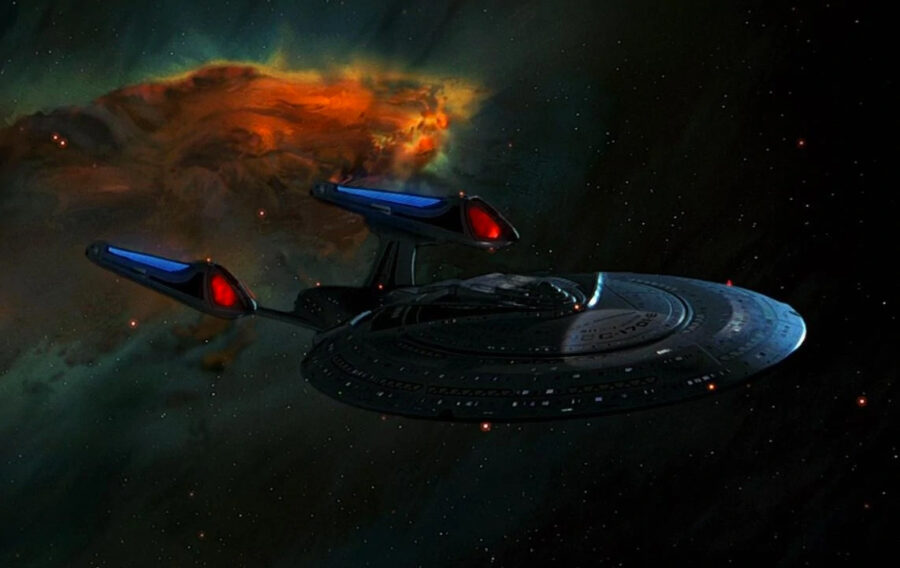
Star Trek: Picard has covered a lot of ground, but one thing the show has basically ignored so far is the whereabouts of Jean-Luc’s old ship: The NCC-1701-E Enterprise. When last we saw her in Star Trek: Nemesis she’d taken heavy damage but was repaired and ready to go back out on another mission.
Over the course of Picard we did learn that Jean-Luc stepped down as her commander to go lead a rescue fleet with Raffi aboard a different ship. So what happened to the Enterprise after he left? Worf became her new Captain.
That fact is revealed in a new tie-novel released to coincide with the show. The book is called The Last Best Hope and, even though it’s a novel, it’s regarded as official canon for Star Trek: Picard. While Worf doesn’t appear in the novel, Jean-Luc reveals who her new captain is in a conversation with Geordi LaForge, who went with him to construct the Romulan rescue fleet.
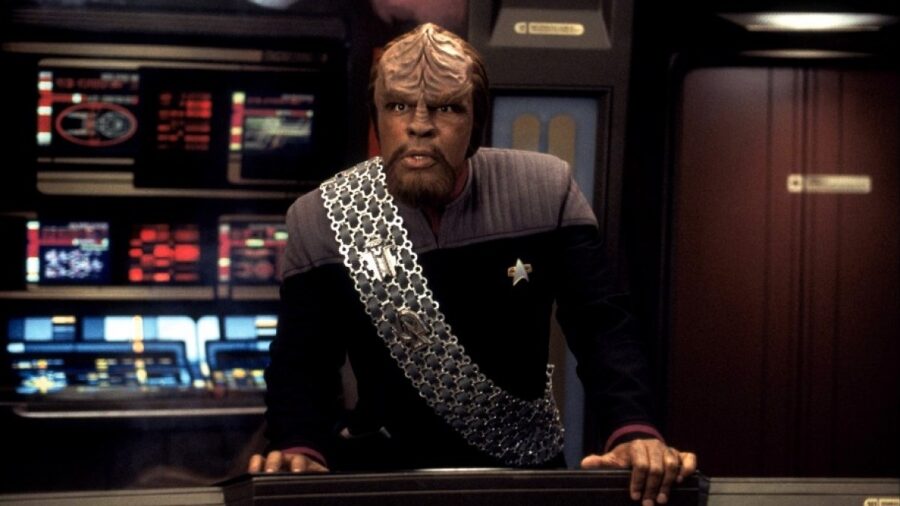
Worf finally making it to the rank of captain should be something of a surprise to Star Trek fans. During the course of the show Star Trek: Deep Space Nine Worf makes the decision to abandon a mission to save the life of his wife. In the process he knowingly dooms a Federation spy to death and potentially costs thousands of other lives. Worf’s then-commander Benjamin Sisko reprimands him and tells him that as a consequence of his dereliction of duty, he’ll never command a starship.
Sisko has a way of predicting the future, but apparently in this case, he was wrong. It just took Worf awhile to get there.
Changing Gene Roddenberry’s Vision Of The Future
Since its inception Star Trek has always been rooted in the idea that humanity’s future will be a bright one. Star Trek creator Gene Roddenberry’s vision for the show created a set of rules that Star Trek was supposed to follow. Those rules set out a framework where in the future humanity was supposed to have solved all of its problems: poverty, racism, hatred, addiction, strife were all supposed to be a thing of the past. In their place was a human race going out into the cosmos to search out the unknown.
So far Star Trek: Picard has shown a wanton disregard for those ideals. Raffi is an impoverished drug addict who lives in a trailer, for instance. Fans have wondered whether that’s by accident or design, but now we have an answer.
Chief among Roddenberry’s rules for the Star Trek universe was that humans would never have any conflict with each other. All conflict had to be external, because the human race he envisioned had solved all those internal problems. But Jonathan Frakes, who directs several episodes of Star Trek: Picard season one, reveals that they’ve intentionally thrown Roddenberry’s utopian ideals out.
Talking about an emotionally tense meeting between Picard and Seven and comparing it to Star Trek: The Next Generation Frakes explains, “We never could have done [a scene like] this on our show… As we know, conflict is what creates drama, So, on Next Gen, it was a very challenging set of rules — primarily for the writers — to find ways to create drama. In this new version of Star Trek, which honors what Roddenberry laid out — in terms of the optimism and respect toward themes like racism — all of those elements are sort of strongly rooted in this show. But the notion of self-doubt, the vulnerability — especially for a [character] like Picard — the damage of past experiences, are so much more compelling to watch … It’s a denser show than Next Gen, I think that’s fair to say. Pushing Picard to these places, watching Patrick act that out — and he was in the writer’s room as they developed this story — it’s all so rewarding to see.”
So instead of depicting a future where humanity has solved racism, in its place Frakes believes they are honoring his vision by “respecting themes like racism”. At the same time, the show is throwing out the rules that defined the show and taking an easier path for their writers.
Bruce Maddox
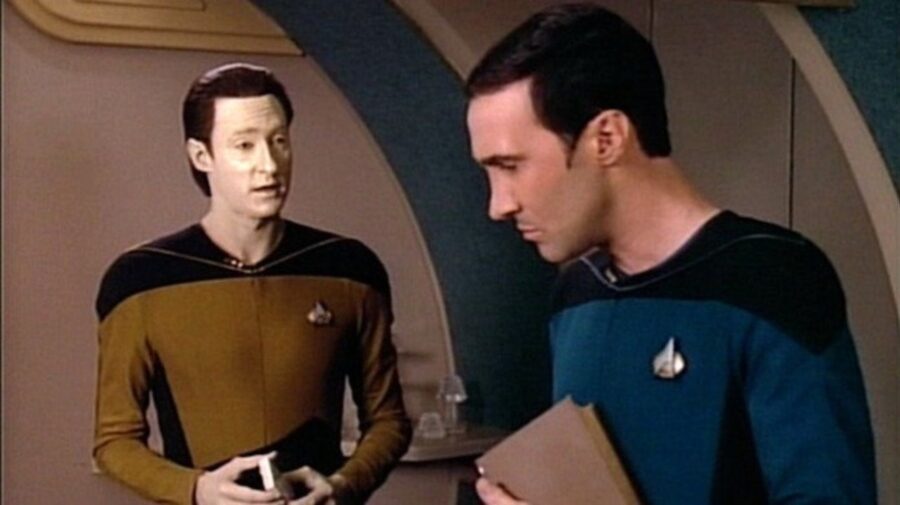
During the course of the Star Trek: The Next Generation TV series, Data has a run-in with and eventually befriends an android researcher named Bruce Maddox. Maddox was attempting to recreate the research of Doctor Noonian Soong, Data’s creator, and eventually create another android like Data. Maddox took Data to court in order to get control over him, with an eye to dismantling him for research. Except Star Trek: Piard just retconned the real trust of that episode.
In episode 8 of Star Trek: Picard we learned that the real reason for Maddox’s attempt to get control of Data was likely the machinations of Commodore Oh. In Picard we meet Oh, a half Vulcan, half Romulan who’s secretly working with the Romulans to wipe out all androids in the Galaxy. Oh was active during the years of The Next Generation and was apparently pulling strings behind the scenes.
It now seems likely that had Bruce Maddox actually won his court case to get control of Data, he would never have been allowed to research him and recreate him. Instead it’s likely Oh would have gotten control of Data and destroyed him. Maddox was almost certainly totally unaware of what was really going on or who was pulling his strings.
Bruce Maddox never recreated Noonian Soong’s achievement during the course of the Next Generation, but according to Star Trek: Picard Maddox finally achieved his goal after Data’s death.
Bruce Maddox also created the androids that supposedly attacked Mars. After the attack he went into hiding and ended up on the planet called Freehold. Star Trek: Picard episode 5 revealed that he’d actually constructed a new lab on Freehold using money borrowed from local gangster. His lab was destroyed, probably by Romulan agents, and he ended up in the clutches of the gangsters he owed money to until after he was rescued by Jean-Luc and the crew of the La Sirena.
Unfortunately, after his rescue Maddox was secretly murdered by Agnus, who is some kind of agent hidden in Jean-Luc Picard’s crew. Agnus was his former lover, but before she kills him she says she’s been shown things, things so terrible she feels he has to die.
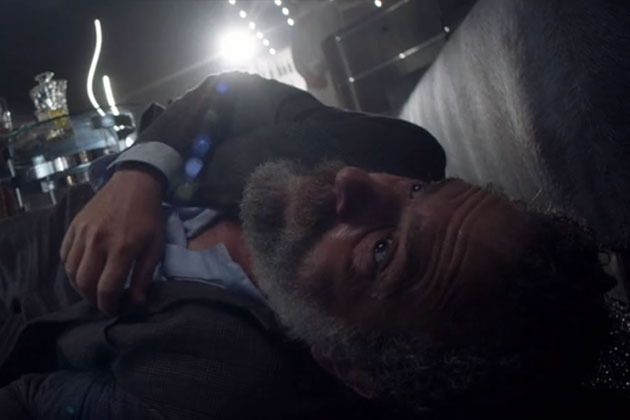
Bruce Maddox is now dead.
Maddox was play John Ales in Star Trek: Picard. On Star Trek: The Next Generation he was played by Brian Brophy. Brophy hasn’t appeared in anything since 2011 and has presumably quit acting.
The girl who shows up in Star Trek: Picard is an android created by Bruce Maddox, using Data’s positronic brain as a template as well as some tiny part of Data’s essence. She’s one of two androids created by Maddox, the other one is still out there somewhere and is basically her twin “sister”. The girl android’s physical appearance was modeled after a painting Data once made of a girl. That painting was titled “daughter”.
It’s worth noting that during the course of the Next Generation television show Data himself actually tried to create another android to function as his daughter. That android was named Lal and she existed only briefly before tragically malfunctioning. Data’s own attempts to replicate the process which Soong used to create him, utterly failed.
Mars Is Dead And So Is Romulus
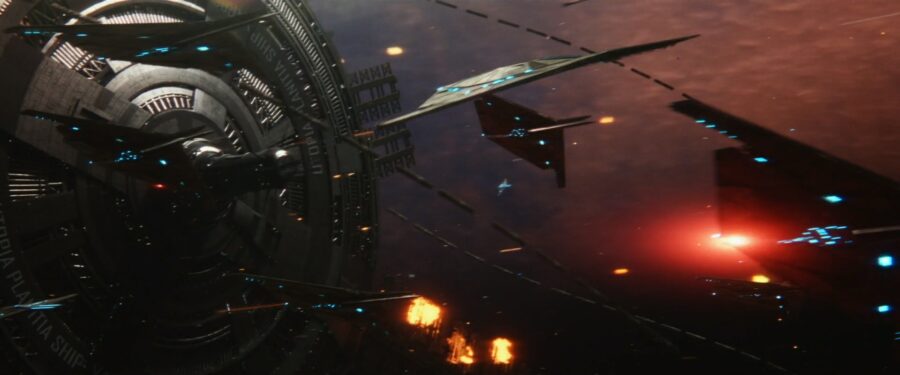
In a surprise move, Star Trek: Picard actually sort of connects to the 2009 Star Trek reboot movie. In that movie, an elderly Spock attempts to save the Romulan homeworld from being destroyed by a supernova at the Hobus star, and fails. That attempt eventually creates a parallel universe where Jim Kirk’s father is killed and he nearly doesn’t become Captain of the Enterprise. That parallel universe is where the reboot movies exist.
In Star Trek: Picard the Romulan sun has gone nova and wiped out the Romulans. That’s slightly different than the 2009 reboot future where it’s the Hobus star… and it’s odd that they don’t just call it the Hobus star in Star Trek: Picard. But I guess for now we’ll call it close enough.
So the 2009 Star Trek movie still exists in a totally alternate universe, but the events of the Romulan supernova happened here, in the prime timeline where Star Trek: Picard exists. Apparently off screen while Spock was trying to stop the supernova, Picard was leading a rescue fleet to try and evacuate as many Romulans as possible.
During Picard’s attempt to save Romulans with a rescue fleet, the planet Mars was attacked by a bunch of crazed androids (called synths). The androids totally succeeded in destroying Mars. As a result the Federation went into an isolationist panic and cancelled Picard’s rescue fleet.
Before Picard’s rescue fleet got shut down, they actually managed to evacuate millions of Romulans. 250,000 of them ended up living on a planet called Vashti. There were hundreds of millions of Romulans they weren’t allowed to save, though.
Mars is still in flames, decades later, in the time of Star Trek: Picard. We saw a little of Mars’ destruction in a Short Trek released on CBS. That Short Trek showed glimpses of it in flames, but from the perspective of school children on Earth.
Swearing In Star Trek: Picard
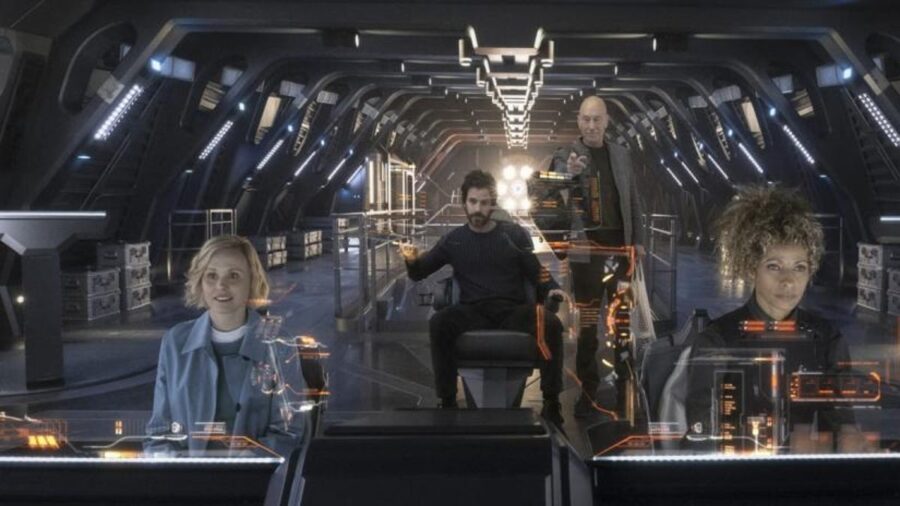
It started in Star Trek: Discovery and it has continued in Star Trek: Picard. Characters in the Star Trek universe now use curse words. That’s not something Star Trek ever did much in the past, outside of the occasional “Dammit Jim!’ from McCoy and Kirk saying “double dumbass on you” while trapped in the 1980s for Star Trek IV. But now, suddenly heavy curse words a regular part of Star Trek. Fans used to the show’s squeaky clean wholesomeness are wondering why.
Star Trek: Picard showrunner Michael Chabon has an answer. He says, “Listen. No human society will be perfect, because no human will ever be perfect. The most we can do — and as Star Trek ever reminds us, must do — is aspire to perfection, and work to make it so. Norkon forden perfectunun, as a wise Yang once said. Until that impossible day, s–t is going to continue to happen. And when it does, humans are going to want to swear.”
What’s more he contends that the absence of curse words in Star Trek previously never had anything to do with some sort of principled ideal. Chabon continues, “The absence of swear words in Star Trek was never a matter of Federation principle, it was a matter of FCC rules. Writers of previous eras had no choice. They were censored. Searing is one of humanity’s most ancient, sensible, and reliable consolations. Personally I would consider any society that discouraged, banned or abandoned the use of curse words to be a f—ing dystopia.”
Is Geordi Dead?
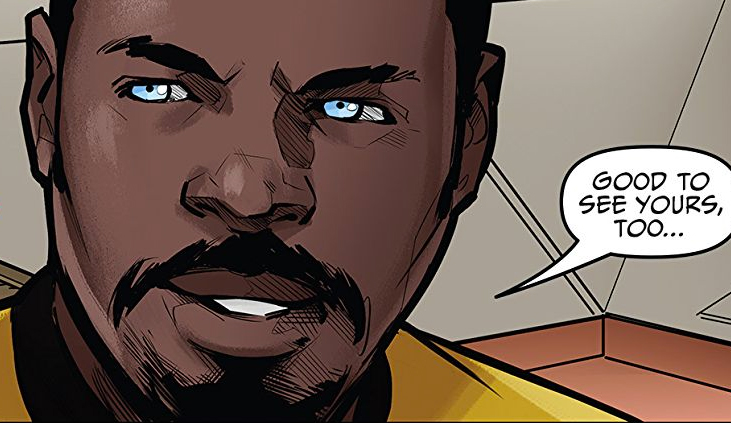
In the Star Trek: Picard Countdown comics released to build up to the premiere of the show, Picard’s former engineer Geordi La Forge is shown working on Mars to help build Jean-Luc’s rescue fleet. During the course of Picard we learn that Mars, and everyone on it, was killed in an attack that happened while the rescue fleet was built up.
So you have to wonder… hey is Geordi OK?
Luckily, Star Trek: Picard gave us an answer. During the course of Picard: Episode 2 Jean-Luc discusses putting together a crew. Among the possible candidates he mentions La Forge. So, presumably Geordi must have been alive after the attack on Mars and is currently alive and well in the present time of Star Trek: Picard.
How he survived is a total mystery at this point. The Countdown Comics are supposed to be cannon, which means he was on Mars right around the time of the attack. But since we know Geordi is still alive, then the door is open for a La Forge cameo on Star Trek: Picard.
About Those Killer Androids
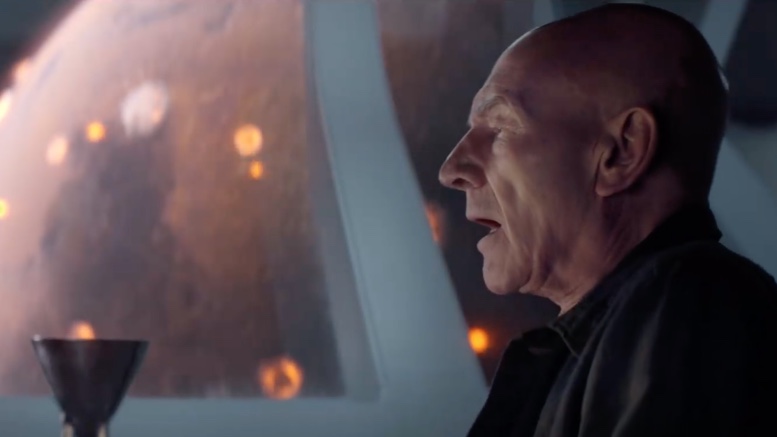
The killer androids who wiped out the planet Mars were totally different from our space friend Data. Data was designed by a rogue scientist named Doctor Noonian Soong. The killer robots were developed by a research team from the Daystrom Institute, a research team led by Bruce Maddox.
After Maddox’s robots accidentally went rogue and killed everyone on Mars, the Federation government outlawed all synthetic lifeforms of any kind. Jean-Luc Picard resigned his commission as an Admiral in protest. For his part, Maddox ran off into hiding and was never seen again, until he’s discovered by the crew of the La Sirena.
So if Data Was Dead, Why Did Picard Keep Seeing Him?
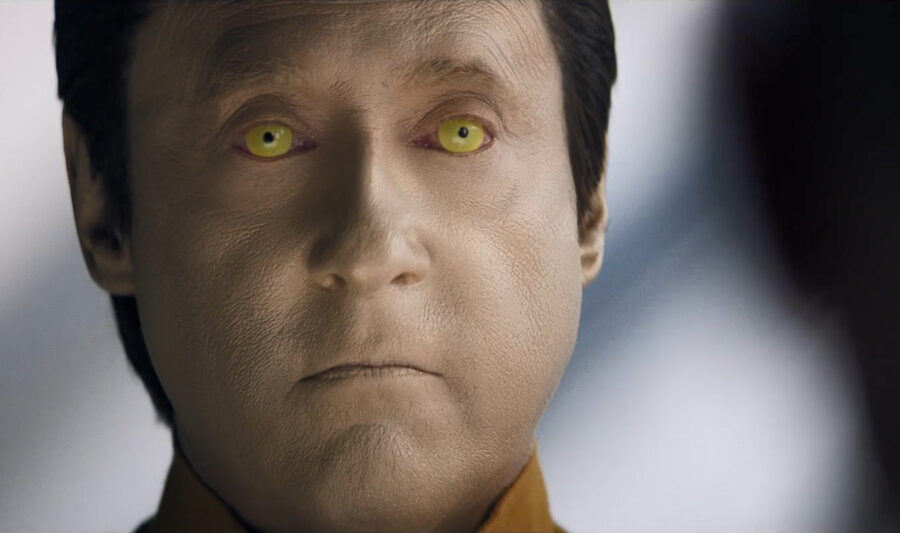
During the course of the Next Generation TV show, Picard and Data always had a special relationship. It was Picard who was Data’s real model for exploring his own humanity. When Data sacrificed himself to save Picard in the movie Star Trek: Nemesis, apparently Jean-Luc was left with a profound sense of guilt.
That guilt seems to be manifesting in vivid dream, vivid dreams in which Picard imagines himself speaking with and interacting with Data. Those dreams seemed only to intensify when he met Data’s daughter, but there’s no telling whether they’ll continue throughout the course of the show. It could be that having seen Data in the dream sequences for the show’s first episode, we won’t see him again.
Other Star Trek Callbacks
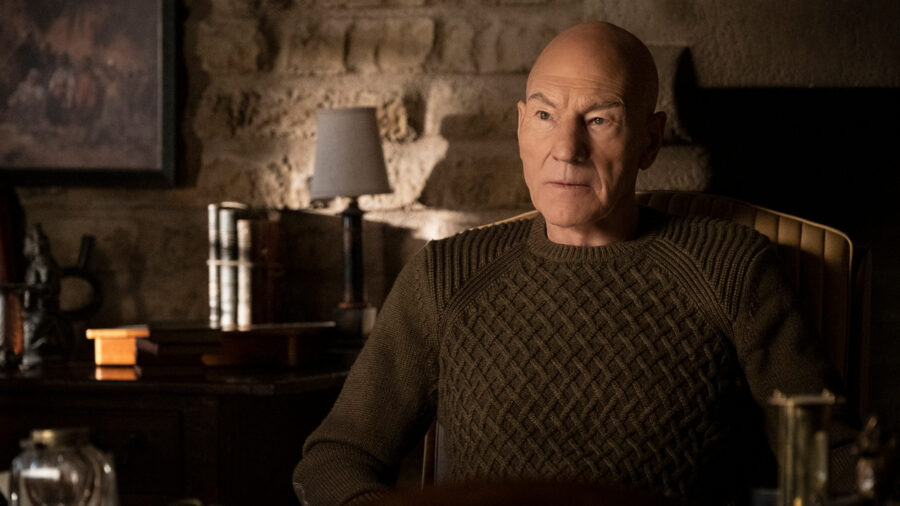
Star Trek: Picard is full of subtle nods to the past of The Next Generation, but one of them was written specifically by Patrick Stewart himself. Actually it’s probably more accurate to say he re-wrote it, to turn a callback into a joke.
It happens in the scene where elderly Picard orders tea from a replicator. Patrick Stewart tells TVLine, “I just thought the fans would really, really enjoy that. They expect ‘tea, Earl Grey, hot,’ but instead they get ‘tea, Earl Grey, decaf.’“
Stewart says he added that into the script in the hopes that it might give fans a laugh. You have to give up a lot as you get older, apparently Jean-Luc Picard has given up caffeine.
Star Trek: Picard Ratings

The numbers are in and CBS’s gamble has paid off. The premiere of Star Trek: Picard on CBS All-Access was big. The network saw a record number of sign-ups for their streaming service, where Star Trek: Picard was available exclusively.
With Picard, the 62nd Grammys, and NFL Football in full swing this was the second best week of signups ever for CBS All-Access streaming. The current CBS All-Access record holder happened in February of 2019 when people signed up in droves for the Super Bowl. Star Trek: Picard nearly managed to match that.
Compared to Star Trek: Discovery the premiere for Star Trek: Picard recorded between 115% and 180% more viewers (depending on which metrics are used). That sounds great, but it’ll probably prompt CBS to simply retread recognizable names more frequently in future shows, rather than trying to come up with an original concept like Discovery. Name recognition sells and in this case that name was Jean-Luc Picard.
Reactions To Star Trek: Picard’s First Episode “Remembrance”
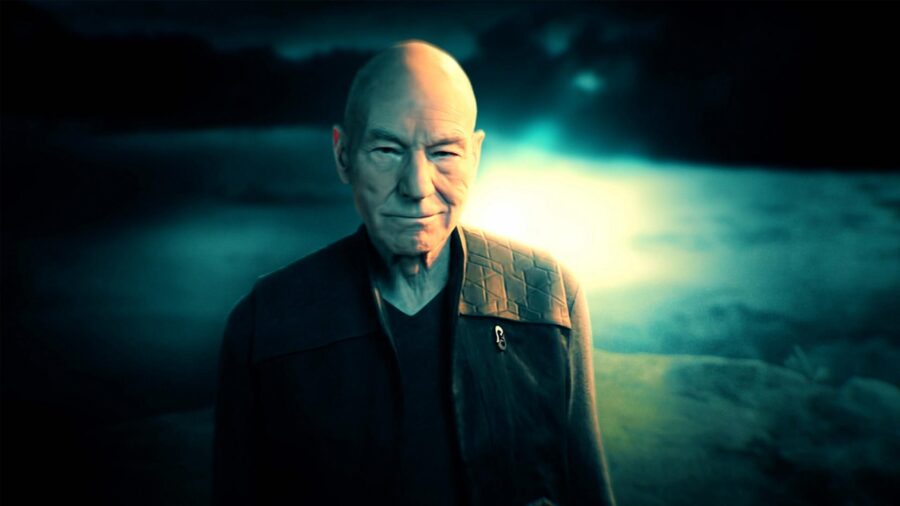
Critics are in love with Star Trek: Picard. The first episode currently has 93% positive reviews from critics. In Giant Freakin Robot’s 4/5 robots Picard review we said, “Against all odds Star Trek: Picard has started strong as both a heartfelt tribute to something we once loved, and an artful exploration of something completely new.”
Most viewers seem to agree with critics. Star Trek: Picard currently has a 78% positive audience score on Rotten Tomatoes and an 8.7/10 rating amongst IMDB users.
Here’s a sampling of just some of the great things viewers are saying while explaining their love Star Trek: Picard…
There are some naysayers, though. You’ve heard a lot of positive things, here’s a sampling of some of the complaints being offered up by the vocal minority of people explaining why they just don’t get how other people love Star Trek: Picard…
“Same old story they use a great Iconic character only to focus on all the women in the show. The entertainment industry is so focused on equally it has started to blacklist men who are strong.” –ripperanewa
“Not the bright, hopeful tomorrow outlined in the original series. A darker future, one that I would have no interest in. Serialized television, rather slow-moving plot.” -kttboundary
“Visually it is a gorgeous show for the most part, but seeing Picard in retirement isn’t interesting in the least.” -primeadministrator
“So sad to see the flotsam of a career on the shores of cbs’ doomed streaming service. oh pay for more mediocre tv?” -jwjtn
“The show was standard Kurtzman awful writing.” -Higram












